Elliott Erwitt est né à Paris en 1928, fils d'émigrés russes, Elliott Erwitt a grandi en Italie et en France. Sa famille émigre aux Etats-Unis en 1939, s'installant d'abord à New York puis à Los Angeles.
Actualité Vente caritative de Magnum Photos au profit de la Croix-Rouge Actualité Vente chez Magnum : l' « intimité » sous toutes les coutures Actualité Gianni Berengo Gardin et Elliott Erwitt: deux complices au Salon de la Photo Actualité Elliott Erwitt à l'honneur du Sony World Photography Awards Actualité Elliott Erwitt au Panthéon des photographes Actualité 20 ans, une fête Insensée Actualité Erwitt, Leibovitz, LaChapelle, réunis autour d'un café... Actualité Elliott Erwitt, interviewé par son fils, revient sur toute sa carrière. Actualité 25 ans de Reporters Sans Frontières : 101 Photos de MAGNUM pour la liberté de la presse Actualité Polka Magazine #8 Polka Magazine Chaque saison, changez votre regard sur le monde Actualité EDITION #8 : numéro du printemps Actualité Prix BMW - Paris Photo ANNONCE DES 20 FINALISTES 2009 Concours ICP Infinity Awards 2011 : Elliott Erwitt Life Achievement, Alec Soth, Viviane Sassen... Livre Magnum contact sheets Livre MAGNUM MAGNUM, les photographes de l'agence se commentent en duos Livre Snaps - Elliott Erwitt, première monographie Livre Sequentially Yours by Elliott Erwitt Livre Berlin Now Edited by Dagmar von Taube Livre Elliott Erwitt - Unseen Livre Guy le Querrec D'Jazz a Nevers Chemins Croisés Livre Elliott Erwitt Snaps Signature Signature du nouveau livre d'Elliott Erwitt Vente Lempertz - Photography Auctions in Cologne Vente Ventes : Photographie Moderne et Contemporaine - 25 mai 2016 Vente Auction sale « Friends without a Border » Vente Friends Without A Border Presents 17th Annual Friends of Friends Photography Auction Vente Vente de Photographies anciennes, modernes et contemporaines à la maison Ader Vente Vente de photographies Anciennes et Contemporaines - Leclere Maison des Ventes Vente Photographs auction Festival I love Africa Festival Le festival Portrait(s) à Vichy Festival MADRIDFOTO 4
International Contemporary Photography Fair 2012 Festival 2e édition de la Milan Image Art Fair (MIA) Festival MADRIDFOTO3 - 2011 Festival Festival de la Photographie Méditarranéenne, PhotoMed 2011 Exposition Exhibition : Elliot Erwitt at the Robert Koch Gallery Exposition Exposition : Erwitt et List à la galerie Magnum Photos Exposition Shoot! Shoot! Shoot! Photographs of the 60s and 70s Exposition Exhibition : « Marilyn Monroe 90th Anniversary. A Life In Picture » Exposition Exhibition : « Kolor » by Elliott Erwitt Exposition Exhibition : « Platinium » at Atlas Gallery Exposition Exhibition : « Shoot! Shoot! Shoot! » in Munich Exposition Exhibition : « Black & White meets color » by Elliott Erwitt Exposition Commandes photographiques du groupe Lhoist Exposition Elliott Erwitt's Kolor at Red October Exposition ELLIOTT ERWITT at PDNB Gallery Exposition L'art du portrait à l'honneur cet été à Vichy avec l'exposition « PORTRAIT(S) » Exposition Exposition : « Magnum Photos, histoires de portraits » à Bercy Village Exposition Exhibition : Drive In at Bildhalle Exposition Exposition Elliott Erwitt : Kolor Exposition Elliott Erwitt, Regarding Women Exposition « Celebrated » at the Atlas Gallery Exposition Drive In exhibition about cars Exposition La Galerie Esther Woerdehoff présente sa nouvelle exposition, « Drive-In » Exposition Peter Fetterman Gallery presents « Portraits of the 20th Century » Exposition Fotomuseum WestLicht presents « In Our Time » Exposition Mois de la Photo 2012 : Subtiles et Etrangetés aux Galeries Photo Fnac Montparnasse et Forum des Halles Exposition « Ciel il pleut ! » : 46 photos trempées des plus grands noms de la photographie Exposition Nuits Photographiques des Rencontres d'Arles 2012 Exposition Photographies modernes et contemporaines à l'Hôtel Drouot Exposition Elliott Erwitt à la Polka Galerie Exposition Carte Blanche à Robert Delpire - Galerie Tarquinia Exposition Vente de livres photographiques de collection 2011 Exposition Sequentially Yours - Atlas Gallery, London - ELLIOT ERWITT Exposition Est // Ouest : Icônes : Erwitt, Huguier, Riboud, ... Exposition Magnum photos présente Elliott Erwitt Exposition ICP opens with Cuba in Revolution Exposition Le bestiaire imaginaire L'animal dans la photographie de 1850 à nos jours Exposition MAP 10 - Exposition collective Exposition New York Promenade - USA Underground at the galerie David Guiraud Exposition New York Promenade - USA Underground Exposition Faces of Our Times, Atlas Gallery Exposition Early Magnum à Londres rare prints from the Magnum archive Exposition Faces of our Times Exposition On the Road. Le voyage ce n'est pas arriver, c'est partir Exposition Paris - Elliott Erwitt Exposition Action! - Polka Galerie Exposition Cinema Mundi - Galerie Polka Exposition On the Road - Maison Européenne de la Photographie Exposition Personal Best - Elliott Erwitt Exposition Tirages limités Exposition Tokyo photo 2009 Japan's first art fair dedicated to still photography Exposition POLAROID exhibition Atlas gallery Exposition Sony World Photography Awards 2009 Exposition « Chaque photo a son histoire…» L'AMERIQUE DANS TOUS SES ETATS Exposition Elliott Erwitt exhibition Unseen Exposition Elliott Erwitt - Seen & Unseen Exposition Magnum Photos 60 years at the Stedelijk Museum Exposition Elliott Erwitt Seen and Unseen Modifier l'image
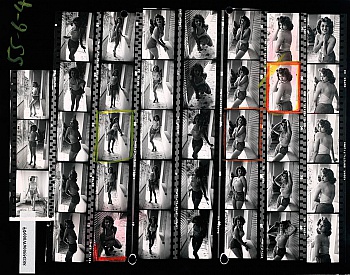 Magnum Photo lance sa grande oeuvre caritative saisonnière au profit du comité international de la Croix-Rouge. Du lundi 23 novembre au mardi 1er décembre, se tiendra une vente de planches-contacts des photographes les plus renommés de l'agence : Elliott Erwitt, Martin Parr, Dennis Stock ou Eve Arnold.
Contact Sheet Print: James Dean
Dennis Stockt
Magnum photos entretient une relation de longue date avec la Croix-Rouge et couvre ses travaux depuis la seconde guerre mondiale. L'agence souhaite donc célébrer cet héritage lors de cette œuvre de bienfaisance saisonnière, en proposant ses planches-contacts au prix de 175 dollars.
Les planches seront toutes estampillées au verso par les artistes et au recto par Magnum Ph...
Magnum Photo lance sa grande oeuvre caritative saisonnière au profit du comité international de la Croix-Rouge. Du lundi 23 novembre au mardi 1er décembre, se tiendra une vente de planches-contacts des photographes les plus renommés de l'agence : Elliott Erwitt, Martin Parr, Dennis Stock ou Eve Arnold.
Contact Sheet Print: James Dean
Dennis Stockt
Magnum photos entretient une relation de longue date avec la Croix-Rouge et couvre ses travaux depuis la seconde guerre mondiale. L'agence souhaite donc célébrer cet héritage lors de cette œuvre de bienfaisance saisonnière, en proposant ses planches-contacts au prix de 175 dollars.
Les planches seront toutes estampillées au verso par les artistes et au recto par Magnum Ph...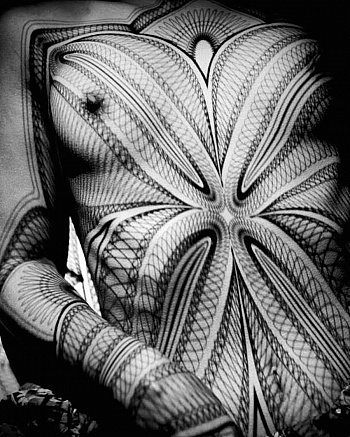 Du 9 au 13 novembre, découvrez la nouvelle vente de photographies "Magnum Square Print Sale".
Toutes les photos mises en vente relèvent de la question de l'intimité : Qu'est-ce que l'intimité ? Quel lien le photographe entretient-il avec les sujets qu'il photographie ? A quel moment son travail devient-il privé ? Ces questions ont été étudiées par l'agence Magnum qui ont regroupé plusieurs tirages en rapport à ces interrogations. Vous pourrez retrouver l'ensemble de la collection sur www.magnumphotos.com. Chaque tirage, au format carré 15,2cm x 15,2cm, coûte 100 dollars. Il est dédicacé par l'artiste. Sont à vendre des clichés de Robert Capa, Elliot Erwitt, Steve M...
Du 9 au 13 novembre, découvrez la nouvelle vente de photographies "Magnum Square Print Sale".
Toutes les photos mises en vente relèvent de la question de l'intimité : Qu'est-ce que l'intimité ? Quel lien le photographe entretient-il avec les sujets qu'il photographie ? A quel moment son travail devient-il privé ? Ces questions ont été étudiées par l'agence Magnum qui ont regroupé plusieurs tirages en rapport à ces interrogations. Vous pourrez retrouver l'ensemble de la collection sur www.magnumphotos.com. Chaque tirage, au format carré 15,2cm x 15,2cm, coûte 100 dollars. Il est dédicacé par l'artiste. Sont à vendre des clichés de Robert Capa, Elliot Erwitt, Steve M...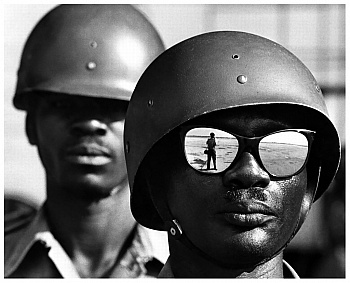 Du 5 au 9 novembre, le Salon de la Photo mettra à l'honneur Gianni Berengo Gardin et Elliott Erwitt, deux maîtres de l'argentique, mais aussi deux grands amis. L'exposition rassemble 120 photographies, grâce à la collaboration de la Fondation Forma (Milan).
Elliott Erwitt, issu d'une famille d'immigrés russes à Paris, puis aux Etats-Unis, est très tôt remarqué par Edward Steichen et Robert Capa. Parraîné par ce dernier, il entre à l'agence Magnum Photos et travaille pour le magazine Life. En 1955, il participe à la célèbre exposition The Family of Man tenue au Musée d'Art moderne de New York. Depuis, il a présenté son travail aux quatre coins de la planète, notamm...
Du 5 au 9 novembre, le Salon de la Photo mettra à l'honneur Gianni Berengo Gardin et Elliott Erwitt, deux maîtres de l'argentique, mais aussi deux grands amis. L'exposition rassemble 120 photographies, grâce à la collaboration de la Fondation Forma (Milan).
Elliott Erwitt, issu d'une famille d'immigrés russes à Paris, puis aux Etats-Unis, est très tôt remarqué par Edward Steichen et Robert Capa. Parraîné par ce dernier, il entre à l'agence Magnum Photos et travaille pour le magazine Life. En 1955, il participe à la célèbre exposition The Family of Man tenue au Musée d'Art moderne de New York. Depuis, il a présenté son travail aux quatre coins de la planète, notamm... Il est l'un des premiers à avoir rejoint l'agence Magnum... C'est le grand Elliott Erwitt qui recevra, lors du gala des Sony World Photography Awards 2015, une distinction ce jeudi 23 avril à Londres.
C'est l'un des fondateurs de l'agence Magnum, Robert Capa, qui remarquera et invitera Elliott Erwitt à en devenir membre. Et comment ne pas être admiratif ? Erwitt photographie de manière satirique. Europe, Etats-Unis, enfants, chiens, stars... Beaucoup sont passés sous son oeil. Une chance, car comme l'a écrit Erwitt : "La photographie, c'est la synthèse d'une situation. L'instant où tout s'assemble. L'idéal insaisissable ". Ce jeudi, le Sony World Photography Awards 2015 lui rendra homma...
Il est l'un des premiers à avoir rejoint l'agence Magnum... C'est le grand Elliott Erwitt qui recevra, lors du gala des Sony World Photography Awards 2015, une distinction ce jeudi 23 avril à Londres.
C'est l'un des fondateurs de l'agence Magnum, Robert Capa, qui remarquera et invitera Elliott Erwitt à en devenir membre. Et comment ne pas être admiratif ? Erwitt photographie de manière satirique. Europe, Etats-Unis, enfants, chiens, stars... Beaucoup sont passés sous son oeil. Une chance, car comme l'a écrit Erwitt : "La photographie, c'est la synthèse d'une situation. L'instant où tout s'assemble. L'idéal insaisissable ". Ce jeudi, le Sony World Photography Awards 2015 lui rendra homma... Elliott Erwitt est membre de l'agence Magnum depuis 1953 et travaille paralèllement pour Collier's, Look, Life, Holiday... durant l'âge d'or de la presse illustrée. Il devient même président de l'agence pendant trois ans dans les années 1960.
À Actuphoto, nous avons tant de fois déclaré notre amour à l'esprit et aux photograghes de cette agence mythique. Nous ne sommes pas les seuls ! Erwitt, né en France en 1928 de parents Russes, va recevoir un prix d'honneur au Sony World Photgraphy Award, le 23 avril 2015. Cette distinction est justifiée, je cite, par "l'exceptionnelle contribution d'Elliott Erwitt à la Photographie". Des plus célèbres au moins connues, une partie de ...
Elliott Erwitt est membre de l'agence Magnum depuis 1953 et travaille paralèllement pour Collier's, Look, Life, Holiday... durant l'âge d'or de la presse illustrée. Il devient même président de l'agence pendant trois ans dans les années 1960.
À Actuphoto, nous avons tant de fois déclaré notre amour à l'esprit et aux photograghes de cette agence mythique. Nous ne sommes pas les seuls ! Erwitt, né en France en 1928 de parents Russes, va recevoir un prix d'honneur au Sony World Photgraphy Award, le 23 avril 2015. Cette distinction est justifiée, je cite, par "l'exceptionnelle contribution d'Elliott Erwitt à la Photographie". Des plus célèbres au moins connues, une partie de ...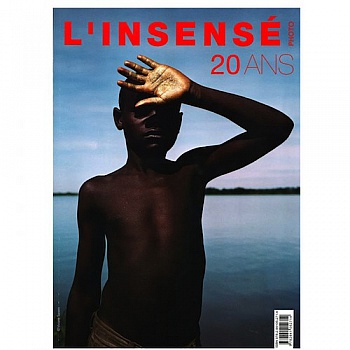 L'imposante revue propose une édition hors norme pour son anniversaire. Telle une compilation de chansons d'amour, la parole est donnée à cinquante personnalités de tous horizons. Comme un cadeau, ils ont choisi une photo « préférée » et en ont expliqué l'émotion et l'intimité. Le magazine se retrouve alors à incarner ce qu'il est à la base ; une rencontre. Il y a vingt ans, Elizabeth Nora et Vanessa van Zuylen Menesguen montaient le projet un peu dingue de créer une revue purement photographique. Ce projet a finit par aboutir. Et quel aboutissement !
Au fil des pages, on croise les choix d'écrivains, de designers, de réalisateurs, de créateurs, d&#...
L'imposante revue propose une édition hors norme pour son anniversaire. Telle une compilation de chansons d'amour, la parole est donnée à cinquante personnalités de tous horizons. Comme un cadeau, ils ont choisi une photo « préférée » et en ont expliqué l'émotion et l'intimité. Le magazine se retrouve alors à incarner ce qu'il est à la base ; une rencontre. Il y a vingt ans, Elizabeth Nora et Vanessa van Zuylen Menesguen montaient le projet un peu dingue de créer une revue purement photographique. Ce projet a finit par aboutir. Et quel aboutissement !
Au fil des pages, on croise les choix d'écrivains, de designers, de réalisateurs, de créateurs, d&#... Les Lavazzers, tel est le nom de la vingtième édition du Calendrier Lavazza qui, à l'occasion d'un événement aussi important, réunit 12 maestros de la photographie qui ont contribué au succès de ce calendrier au fil des ans :
David LaChapelle, Annie Leibovitz, Ellen von Unwerth, Elliott Erwitt, Finlay MacKay, Erwin Olaf, Thierry Le Gouès, Miles Aldridge, Marino Parisotto, Eugenio Recuenco, Mark Seliger et Albert Watson.
Avec enthousiasme, ils se sont mis en scène pour célébrer leur relation la plus intime avec le café Lavazza à travers des autoportraits innovants, inhabituels et orginaux.
© Annie Leibovitz
© Elliot...
Les Lavazzers, tel est le nom de la vingtième édition du Calendrier Lavazza qui, à l'occasion d'un événement aussi important, réunit 12 maestros de la photographie qui ont contribué au succès de ce calendrier au fil des ans :
David LaChapelle, Annie Leibovitz, Ellen von Unwerth, Elliott Erwitt, Finlay MacKay, Erwin Olaf, Thierry Le Gouès, Miles Aldridge, Marino Parisotto, Eugenio Recuenco, Mark Seliger et Albert Watson.
Avec enthousiasme, ils se sont mis en scène pour célébrer leur relation la plus intime avec le café Lavazza à travers des autoportraits innovants, inhabituels et orginaux.
© Annie Leibovitz
© Elliot... Le photographe américain Elliott Erwitt, membre de l'agence Magnum, recevait début mai le Lifetime Achievement Award de l'International Center of Photography de New York, une récompense pour l'ensemble de sa carrière. L'ICP consacre une rétrospective, Personal Best, du 20 mai au 28 août.
A cette occasion, son fils Misha, lui-même photographe, l'interviewait sur le blog photo du New York Times, Lens, en lui posant des questions venues de tous les membres de sa famille.
Une occasion pour le photographe, chaperonné par Robert Capa à ses débuts, de revenir sur son parcours et ses goûts, et de faire preuve d'humour et d'optimisme tout en partageant son admiration pour Cartier-Bresson, ses reflexions sur le num&eacu...
Le photographe américain Elliott Erwitt, membre de l'agence Magnum, recevait début mai le Lifetime Achievement Award de l'International Center of Photography de New York, une récompense pour l'ensemble de sa carrière. L'ICP consacre une rétrospective, Personal Best, du 20 mai au 28 août.
A cette occasion, son fils Misha, lui-même photographe, l'interviewait sur le blog photo du New York Times, Lens, en lui posant des questions venues de tous les membres de sa famille.
Une occasion pour le photographe, chaperonné par Robert Capa à ses débuts, de revenir sur son parcours et ses goûts, et de faire preuve d'humour et d'optimisme tout en partageant son admiration pour Cartier-Bresson, ses reflexions sur le num&eacu...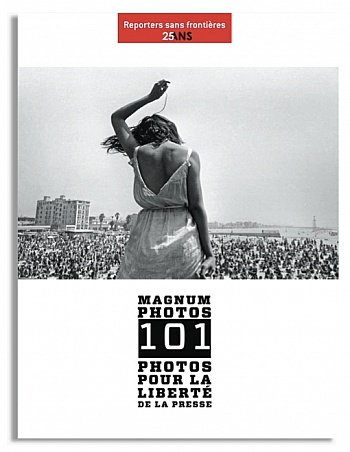 Reporters sans frontières a 25 ans.
Un quart de siècle au service de la défense de la liberté de la presse partout dans le monde. Depuis sa création en 1985, chaque fois que la liberté d’informer et d’être informé est menacée, ou qu’un journaliste est emprisonné pour avoir exercé son métier, l’organisation intervient pour rappeler que sans une presse libre, aucun combat ne peut être entendu. Afin de financer ses actions, Reporters sans frontières a développé, depuis 1992, l’édition d’albums de photographies, trois numéros par an, au prix unitaire de 9€90. Les recettes sont intégralement reversées à l’association. Elles constituent pas moins de 50 % ...
Reporters sans frontières a 25 ans.
Un quart de siècle au service de la défense de la liberté de la presse partout dans le monde. Depuis sa création en 1985, chaque fois que la liberté d’informer et d’être informé est menacée, ou qu’un journaliste est emprisonné pour avoir exercé son métier, l’organisation intervient pour rappeler que sans une presse libre, aucun combat ne peut être entendu. Afin de financer ses actions, Reporters sans frontières a développé, depuis 1992, l’édition d’albums de photographies, trois numéros par an, au prix unitaire de 9€90. Les recettes sont intégralement reversées à l’association. Elles constituent pas moins de 50 % ... NOUS SOMMES TOUS DES IMPRUDENTS COUPABLES
Ses mains tremblaient tellement qu'il n'arrivait pas à recharger son Contax. Robert Capa raconte, dans son livre Juste un peu flou (Delpire, 2003), sa peur sur cette plage de Normandie, Easy Red, ce 6 juin 1944 au petit matin. Il est là, en première ligne. "L'eau atteignait ma lettre d'adieux dans la poche de ma chemise." Les soldats tombent, tués, blessés. "Chacune des balles frappait un corps." La mer est rouge de sang. "Une peur nouvelle et différente me tordait le visage."
Il est là, un casque sur la tête, à photographier, à immortaliser ces heures essentielles de l'histoire de l'humanité. Capa a peur, mais il est courageux. Cette guerre n'est pas sa première...
NOUS SOMMES TOUS DES IMPRUDENTS COUPABLES
Ses mains tremblaient tellement qu'il n'arrivait pas à recharger son Contax. Robert Capa raconte, dans son livre Juste un peu flou (Delpire, 2003), sa peur sur cette plage de Normandie, Easy Red, ce 6 juin 1944 au petit matin. Il est là, en première ligne. "L'eau atteignait ma lettre d'adieux dans la poche de ma chemise." Les soldats tombent, tués, blessés. "Chacune des balles frappait un corps." La mer est rouge de sang. "Une peur nouvelle et différente me tordait le visage."
Il est là, un casque sur la tête, à photographier, à immortaliser ces heures essentielles de l'histoire de l'humanité. Capa a peur, mais il est courageux. Cette guerre n'est pas sa première...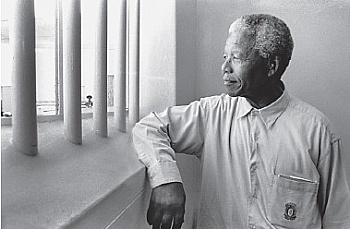 Sortie nationale : Lundi 1er mars 2010
“Parce que les photographes ont besoin d’espace, Polka les accueille à pages ouvertes.”
Alain Genestar, directeur de Polka
Au sommaire de Polka Magazine #8 :
A l’occasion de la Coupe du monde de football qui se tiendra cette année en Afrique du Sud, Polka revient sur l’histoire de ce pays en pleine effervescence.
Dans les photographies de Jodi Bieber et de Krisanne Johnson, le célèbre township de Soweto, champ de bataille des révoltés noirs sous l’apartheid, se tourne résolument vers l’avenir. Le résultat d’une lutte acharnée et de la volonté d’un homme, Nelson Mandela, meneur historique et figure mythique, photographié par Jurgen Schadeberg et...
Sortie nationale : Lundi 1er mars 2010
“Parce que les photographes ont besoin d’espace, Polka les accueille à pages ouvertes.”
Alain Genestar, directeur de Polka
Au sommaire de Polka Magazine #8 :
A l’occasion de la Coupe du monde de football qui se tiendra cette année en Afrique du Sud, Polka revient sur l’histoire de ce pays en pleine effervescence.
Dans les photographies de Jodi Bieber et de Krisanne Johnson, le célèbre township de Soweto, champ de bataille des révoltés noirs sous l’apartheid, se tourne résolument vers l’avenir. Le résultat d’une lutte acharnée et de la volonté d’un homme, Nelson Mandela, meneur historique et figure mythique, photographié par Jurgen Schadeberg et...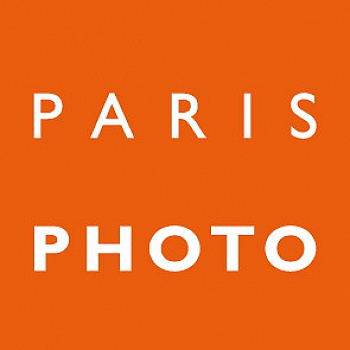 Le jury du Prix BMW – Paris Photo 2009 a sélectionné 20 artistes finalistes pour sa sixième édition. Le thème de ce prix, réservé aux artistes présentés par les galeries participantes à Paris Photo, est :
« Quand avez-vous vécu pour la dernière fois une expérience unique ? ». Ce thème met en mots la philosophie de la nouvelle BMW Série 5 Gran Turismo : une nouvelle expérience humaine, une nouvelle vision du monde.
Les 20 finalistes sélectionnés parmi 55 candidatures retenues seront exposés à Paris Photo du 19 au 22 novembre. L’artiste lauréat recevra le Prix doté de 12 000 euros en ouverture du Salon le 18 novembre prochain.
...
Le jury du Prix BMW – Paris Photo 2009 a sélectionné 20 artistes finalistes pour sa sixième édition. Le thème de ce prix, réservé aux artistes présentés par les galeries participantes à Paris Photo, est :
« Quand avez-vous vécu pour la dernière fois une expérience unique ? ». Ce thème met en mots la philosophie de la nouvelle BMW Série 5 Gran Turismo : une nouvelle expérience humaine, une nouvelle vision du monde.
Les 20 finalistes sélectionnés parmi 55 candidatures retenues seront exposés à Paris Photo du 19 au 22 novembre. L’artiste lauréat recevra le Prix doté de 12 000 euros en ouverture du Salon le 18 novembre prochain.
... The International Center of Photography (ICP) is proud to announce the recipients of the 27th Annual Infinity Awards. Recognized around the world, the awards are widely respected as the leading honor for excellence in the field of photography. «Infinity Award recipients are dedicated to exploring photography’s cultural influence and how it opens new opportunities for communication and personal expression,” states ICP Ehrenkranz Director Willis E. Hartshorn. “This year’s recipients capture the importance of how photography shapes our sense of history in an ever more image-conscious world. We are pleased to recognize their achievements.»
See the video from the 2011 Infinity Awards : http://vimeo.com/24579422
Each year ICP acknowledges the work of those whose powerful ima...
The International Center of Photography (ICP) is proud to announce the recipients of the 27th Annual Infinity Awards. Recognized around the world, the awards are widely respected as the leading honor for excellence in the field of photography. «Infinity Award recipients are dedicated to exploring photography’s cultural influence and how it opens new opportunities for communication and personal expression,” states ICP Ehrenkranz Director Willis E. Hartshorn. “This year’s recipients capture the importance of how photography shapes our sense of history in an ever more image-conscious world. We are pleased to recognize their achievements.»
See the video from the 2011 Infinity Awards : http://vimeo.com/24579422
Each year ICP acknowledges the work of those whose powerful ima... 1st Edition. Signed by 31 Magnum Photographers. Product pictured is not the exact product that will be shipped. Signatures page will be unique to each respective copy. Limited quantities available, price will increase as copies sell out.
This groundbreaking book presents a remarkable selection of contact sheets and ancillary material, revealing for the first time how the most celebrated Magnum photographers capture and edit the very best shots. Addressing key questions of photographic practice, the book illuminates the creative methods, strategies, and editing processes behind some of the world’s most iconic images.
Offers unique insight into the working progress of the celebrated agency’s photographers over the past seven decades their approach to taking and editing their pictures as well as their idio...
1st Edition. Signed by 31 Magnum Photographers. Product pictured is not the exact product that will be shipped. Signatures page will be unique to each respective copy. Limited quantities available, price will increase as copies sell out.
This groundbreaking book presents a remarkable selection of contact sheets and ancillary material, revealing for the first time how the most celebrated Magnum photographers capture and edit the very best shots. Addressing key questions of photographic practice, the book illuminates the creative methods, strategies, and editing processes behind some of the world’s most iconic images.
Offers unique insight into the working progress of the celebrated agency’s photographers over the past seven decades their approach to taking and editing their pictures as well as their idio...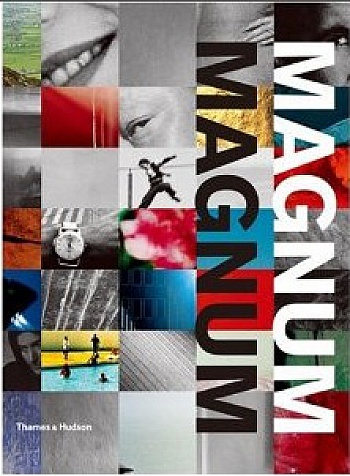 Réédité en « Petit Format », l'ouvrage Magnum Magnum était déjà paru en 2007. Ce livre retrace le travail des grands maîtres de la photographie du XXe siècle, des grands photographes actuels et des nouveaux talents de l'agence de photographes la plus connue du monde. 400 images iconiques des 60 dernières années ont été ici sélectionnées et commentées par les 69 photographes de Magnum. Ainsi, entre autres duos le travail d'Henri Cartier-Bresson est décrit par Eve Arnold, celui de Martin Franck par Ferdinando Scianna. L'oeuvre de Martin Parr est commenté par René Burri et l'oeuvre d'Alex Webb est détaillé par Chris Steele-Perkins.
Ma...
Réédité en « Petit Format », l'ouvrage Magnum Magnum était déjà paru en 2007. Ce livre retrace le travail des grands maîtres de la photographie du XXe siècle, des grands photographes actuels et des nouveaux talents de l'agence de photographes la plus connue du monde. 400 images iconiques des 60 dernières années ont été ici sélectionnées et commentées par les 69 photographes de Magnum. Ainsi, entre autres duos le travail d'Henri Cartier-Bresson est décrit par Eve Arnold, celui de Martin Franck par Ferdinando Scianna. L'oeuvre de Martin Parr est commenté par René Burri et l'oeuvre d'Alex Webb est détaillé par Chris Steele-Perkins.
Ma...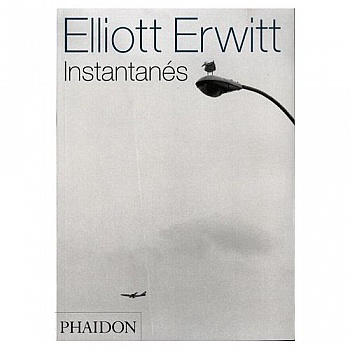 La première monographie exhaustive consacrée à Elliott Erwitt (né en 1928), l'un des photographes majeurs de sa génération, membre influent de l'agence Magnum Photos
depuis 1954. Plus de cinquante ans de photographies, instantanés de la célébrité ou de la vie ordinaire, scènes curieuses et amusantes,
vus à travers l'objectif de l'un des plus grands photographes de son époque et plus de deux cents photographies inédites, révélant toute la diversité de l'oeuvre de cet
artiste prolifique. Deux auteurs de renom, Murray Sayle, écrivain
d'origine australienne vivant au Japon qui collabore régulièrement au New Yorker, et Charles Flowers, écrivain et...
La première monographie exhaustive consacrée à Elliott Erwitt (né en 1928), l'un des photographes majeurs de sa génération, membre influent de l'agence Magnum Photos
depuis 1954. Plus de cinquante ans de photographies, instantanés de la célébrité ou de la vie ordinaire, scènes curieuses et amusantes,
vus à travers l'objectif de l'un des plus grands photographes de son époque et plus de deux cents photographies inédites, révélant toute la diversité de l'oeuvre de cet
artiste prolifique. Deux auteurs de renom, Murray Sayle, écrivain
d'origine australienne vivant au Japon qui collabore régulièrement au New Yorker, et Charles Flowers, écrivain et...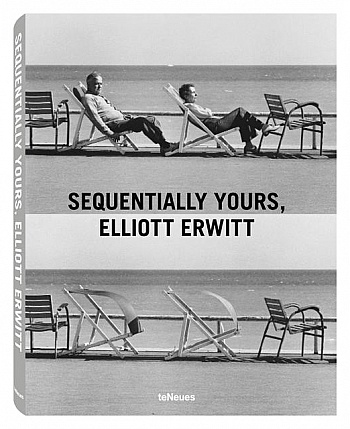 In this unique book, photographic legend Elliott Erwitt presents a series of vignettes, each showing a sequence of photographs shot just moments apart. The characters portrayed vary widely from infants to the elderly to dogs. The themes range from the buzz of street life to lovers in a casual embrace. True to Erwitt's distinctive style, these images are un-staged, and the subjects' spontaneity shines through-heartbeat by heartbeat. Gifted storyteller that he is, Erwitt gives you a sense of what happens next, the end point being sometimes comic, sometimes poignant, and often with a wink.
...
In this unique book, photographic legend Elliott Erwitt presents a series of vignettes, each showing a sequence of photographs shot just moments apart. The characters portrayed vary widely from infants to the elderly to dogs. The themes range from the buzz of street life to lovers in a casual embrace. True to Erwitt's distinctive style, these images are un-staged, and the subjects' spontaneity shines through-heartbeat by heartbeat. Gifted storyteller that he is, Erwitt gives you a sense of what happens next, the end point being sometimes comic, sometimes poignant, and often with a wink.
... A city at the crossroads of history, Berlin is a dynamic metropolis known for its edgy and vibrant role in the worlds of fashion, art, media, film, business, and politics. This photographic portfolio features works by iconic artists such as Peter Lindbergh, Elliott Erwitt, Oliver Mark, Andreas Mühe and Daniel Biskup, as well as rising stars from the newest generation of photographs. Browse stunning images of Berlin’s past glories and hardships, as well as multi-faceted glimpses of its current eclectic energy. Edited by Dagmar von Taube, reporter with her finger on the pulse of international society; in collaboration with top Berlin photo gallery Camera Work and the Ullstein-Bildarchiv, renowned archive of photographic art.
Berlin, eine Metropole am Schei - deweg der Geschichte, sprüht vor Leben und setzt...
A city at the crossroads of history, Berlin is a dynamic metropolis known for its edgy and vibrant role in the worlds of fashion, art, media, film, business, and politics. This photographic portfolio features works by iconic artists such as Peter Lindbergh, Elliott Erwitt, Oliver Mark, Andreas Mühe and Daniel Biskup, as well as rising stars from the newest generation of photographs. Browse stunning images of Berlin’s past glories and hardships, as well as multi-faceted glimpses of its current eclectic energy. Edited by Dagmar von Taube, reporter with her finger on the pulse of international society; in collaboration with top Berlin photo gallery Camera Work and the Ullstein-Bildarchiv, renowned archive of photographic art.
Berlin, eine Metropole am Schei - deweg der Geschichte, sprüht vor Leben und setzt...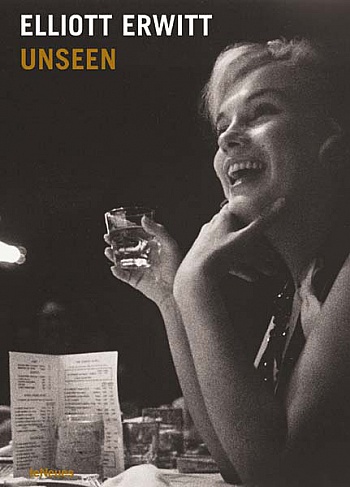 or those already familiar with the scope and ingenuity of this photographic craftsman, this is an essential addition to your Erwitt collection. If not, you can look forward to discovering his eclecticism and expertise. Probing the limits of black-and-white photography, Erwitt's lens captures subtleties ranging from the duskiest grays to the most luminous whites. This intriguing collection of previously unpublished photographs highlights the drama in everyday moments. Its subjects range from anonymous faces in the crowd to candid glimpses of icons like John F. Kennedy, Marilyn Monroe, and Truman Capote. Year: 2007 Images: 155 tritone 160 pages Hardcover...
or those already familiar with the scope and ingenuity of this photographic craftsman, this is an essential addition to your Erwitt collection. If not, you can look forward to discovering his eclecticism and expertise. Probing the limits of black-and-white photography, Erwitt's lens captures subtleties ranging from the duskiest grays to the most luminous whites. This intriguing collection of previously unpublished photographs highlights the drama in everyday moments. Its subjects range from anonymous faces in the crowd to candid glimpses of icons like John F. Kennedy, Marilyn Monroe, and Truman Capote. Year: 2007 Images: 155 tritone 160 pages Hardcover...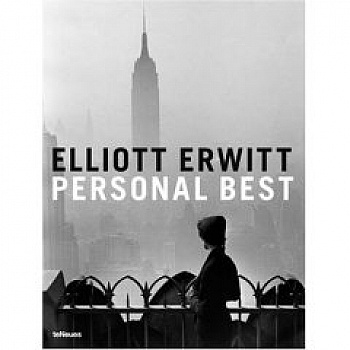 Elliott Erwitt personally selected this stunning collection of work, two thirds of which have never been published before. The generous format of the book and large number of double-page spreads allow you to admire the master's technique and the artistry up close. Every image is photography at its most ebullient and life-enhancing and each reflects the scope of Erwitt's perceptive and eclectic eye. Here is a fitting tribute to this Magnum photographer who has shot such Hollywood legends as Marlene Dietrich and Marilyn Monroe, yet whose delight in everyday irony has captured many witty moments, including his famous portraits of people and their dogs. The full range of Erwitt's genius on display in this magnificent volume including photographs of Kruschev and Nixon in Moscow in 1959, Tehran in 1967 and a tender moment at a...
Elliott Erwitt personally selected this stunning collection of work, two thirds of which have never been published before. The generous format of the book and large number of double-page spreads allow you to admire the master's technique and the artistry up close. Every image is photography at its most ebullient and life-enhancing and each reflects the scope of Erwitt's perceptive and eclectic eye. Here is a fitting tribute to this Magnum photographer who has shot such Hollywood legends as Marlene Dietrich and Marilyn Monroe, yet whose delight in everyday irony has captured many witty moments, including his famous portraits of people and their dogs. The full range of Erwitt's genius on display in this magnificent volume including photographs of Kruschev and Nixon in Moscow in 1959, Tehran in 1967 and a tender moment at a...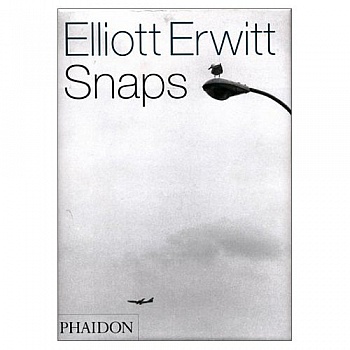 Elliott Erwitt may not be a name that rolls off the tongue, but many of the photographs featured in Snaps, Phaidon's delightful retrospective of his work, will be instantly recognisable. And those that aren't, often prove even more eye-catching. Born Elio Erwitz in 1928 to Russian parents, but raised in America, Erwitt was already a member of the elite Magnum photographic agency when he was in his 20s. The mortgage was paid with high-profile, big-budget colour assignments, but he always carried his hobby camera, a Leica, for his alternative canon, so to speak, of black-and-white, one-take wonders. These second sights make up Snaps, a consciously casual title that captures the essence of Erwitt's professional philosophy as perfectly as he captured his subjects, encapsulating the moment as well as the medium. Put simply, h...
Elliott Erwitt may not be a name that rolls off the tongue, but many of the photographs featured in Snaps, Phaidon's delightful retrospective of his work, will be instantly recognisable. And those that aren't, often prove even more eye-catching. Born Elio Erwitz in 1928 to Russian parents, but raised in America, Erwitt was already a member of the elite Magnum photographic agency when he was in his 20s. The mortgage was paid with high-profile, big-budget colour assignments, but he always carried his hobby camera, a Leica, for his alternative canon, so to speak, of black-and-white, one-take wonders. These second sights make up Snaps, a consciously casual title that captures the essence of Erwitt's professional philosophy as perfectly as he captured his subjects, encapsulating the moment as well as the medium. Put simply, h... le jeudi 15 octobre, de 19 à 21 h
“The Art of André S. Solidor A.k.a. Elliott Erwitt”ainsi que de ses récentes publications "Rome", "New York" et "Dogs"
La signature aura lieu à la galerie Esther Woerdehoff lors du vernissage de l'exposition Sony Photography Award World Tour 2009/2010 que la galerie accueille jusqu'au 24 octobre...
le jeudi 15 octobre, de 19 à 21 h
“The Art of André S. Solidor A.k.a. Elliott Erwitt”ainsi que de ses récentes publications "Rome", "New York" et "Dogs"
La signature aura lieu à la galerie Esther Woerdehoff lors du vernissage de l'exposition Sony Photography Award World Tour 2009/2010 que la galerie accueille jusqu'au 24 octobre...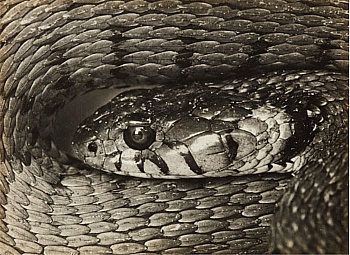 Auction 1068: Photography
Friday, 3 June 2016 2pm
Highlight of this sale is a group of vintage prints by Albert Renger-Patzsch, which includes his famous image "Natterkopf" from 1925. The exceptional work was published in 1928 in his photo book "Die Welt ist schön" (lot 20, €15,000–20,000). The piece was made together with two other animal portraits at Dresden Zoo (lots 18/19, each est. €5,000-6,000) and due to its fascinatingly abstract graphic qualities it has become one of Renger-Patzsch’s most famous works. "Natterkopf" will be coming under the hammer for the first time, together with a selection of other plant, object and landscape photographs by the artist.
A further top lot is an early 1920s vintage print of Karl Blossfeldt’s "Salvia Argent...
Auction 1068: Photography
Friday, 3 June 2016 2pm
Highlight of this sale is a group of vintage prints by Albert Renger-Patzsch, which includes his famous image "Natterkopf" from 1925. The exceptional work was published in 1928 in his photo book "Die Welt ist schön" (lot 20, €15,000–20,000). The piece was made together with two other animal portraits at Dresden Zoo (lots 18/19, each est. €5,000-6,000) and due to its fascinatingly abstract graphic qualities it has become one of Renger-Patzsch’s most famous works. "Natterkopf" will be coming under the hammer for the first time, together with a selection of other plant, object and landscape photographs by the artist.
A further top lot is an early 1920s vintage print of Karl Blossfeldt’s "Salvia Argent... Le 25 mai prochain, venez découvrir la vente organisée par Viviane Esders Photographie : « Photographie Moderne et Contemporaine »
© Gérard Rancinan "«Batman family girls», 2011 (estimation 35 000-45 000 €)
Hôtel Drouot - Paris - Salle 6 - 14h
Maître Yann Le Mouel, Viviane Esders Expert
© Berenice Abbott, New York by night, 1932 (estimation 15 000-25 000 €)
Expositions publiques
Mardi 24 mai 11h-18h
Mercredi 25 mai 11h-12h
Consultez le catalogue et enchérissez sur le site internet....
Le 25 mai prochain, venez découvrir la vente organisée par Viviane Esders Photographie : « Photographie Moderne et Contemporaine »
© Gérard Rancinan "«Batman family girls», 2011 (estimation 35 000-45 000 €)
Hôtel Drouot - Paris - Salle 6 - 14h
Maître Yann Le Mouel, Viviane Esders Expert
© Berenice Abbott, New York by night, 1932 (estimation 15 000-25 000 €)
Expositions publiques
Mardi 24 mai 11h-18h
Mercredi 25 mai 11h-12h
Consultez le catalogue et enchérissez sur le site internet....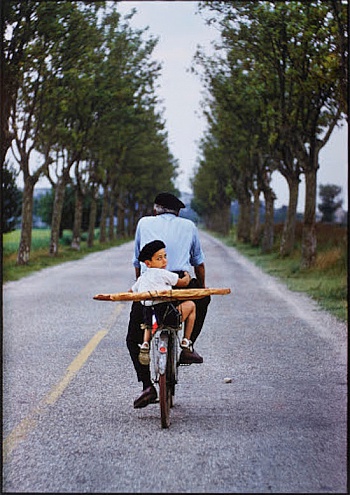 Friends Without A Border (FWAB) was founded by New York-based photographer Kenro Izu in 1996 to provide urgently needed high quality and compassionate medical care to children in Southeast Asia. In 1999, Friends Without A Border opened Angkor Hospital for Children in Siem Reap, Cambodia, where more than 1.3 million patients have been treated. Lao Friends Hospital for Children, opened in February 2015 with outpatient services, is growing to become the first full-service hospital in northern Laos where widespread poverty, poor public infrastructure, and highly mountainous terrain have created significant barriers to accessing health care. FWAB is also dedicated to providing continuing education to health care professionals throughout Southeast Asia; improving the health, nutrition, and hygiene of local communities through ...
Friends Without A Border (FWAB) was founded by New York-based photographer Kenro Izu in 1996 to provide urgently needed high quality and compassionate medical care to children in Southeast Asia. In 1999, Friends Without A Border opened Angkor Hospital for Children in Siem Reap, Cambodia, where more than 1.3 million patients have been treated. Lao Friends Hospital for Children, opened in February 2015 with outpatient services, is growing to become the first full-service hospital in northern Laos where widespread poverty, poor public infrastructure, and highly mountainous terrain have created significant barriers to accessing health care. FWAB is also dedicated to providing continuing education to health care professionals throughout Southeast Asia; improving the health, nutrition, and hygiene of local communities through ... The highly anticipated 17th annual Friends of Friends Photography Auction will be presented on December 9 by Friends Without A Border, a non-profit organization that provides urgently needed medial care to children in Southeast Asia. The auction will feature more than 120 works by leading artists including Adam Fuss, Annie Leibovitz, Berenice Abbott, Bruce Davidson, Daido Moriyama, Eikoh Hosoe, Elliott Erwitt, Herb Ritts, Hiroshi Sugimoto, Horst P. Horst, Irving Penn, Jeff Liao, Jerry Uelsmann, Joel Meyerowitz, Joel-Peter Witkin, Lee Friendlander, Louis Faurer, Ruth Orkin, Saul Leiter, Susan Meiselas, William Wegman, and many more. The online catalogue and auction lots can be viewed at www.fwabphotoauction.org. Online bidding starts Monday, November 24 at www.ibidmobile.net/fwab.
© Sean Perry, Early Spring, N...
The highly anticipated 17th annual Friends of Friends Photography Auction will be presented on December 9 by Friends Without A Border, a non-profit organization that provides urgently needed medial care to children in Southeast Asia. The auction will feature more than 120 works by leading artists including Adam Fuss, Annie Leibovitz, Berenice Abbott, Bruce Davidson, Daido Moriyama, Eikoh Hosoe, Elliott Erwitt, Herb Ritts, Hiroshi Sugimoto, Horst P. Horst, Irving Penn, Jeff Liao, Jerry Uelsmann, Joel Meyerowitz, Joel-Peter Witkin, Lee Friendlander, Louis Faurer, Ruth Orkin, Saul Leiter, Susan Meiselas, William Wegman, and many more. The online catalogue and auction lots can be viewed at www.fwabphotoauction.org. Online bidding starts Monday, November 24 at www.ibidmobile.net/fwab.
© Sean Perry, Early Spring, N...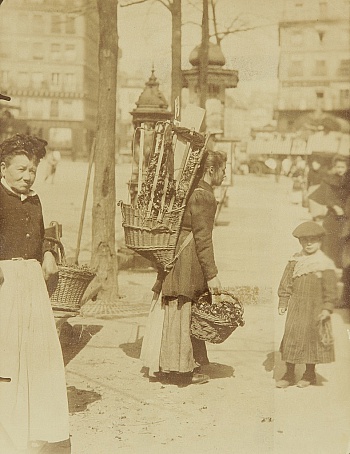 Photographies anciennes par :
M. Aleo, Alinari, E. Atget, G. de Beaucorps, A. Braun, D. Charnay, Chevojon, G. Cromer, E. S. Curtis, Disdéri, T. Dumas, P. Géniaux, L. Gimpel, E. Huard, C. Lallemand, G. Le Gray, Charles Marville, L. Misonne, C. Moon, F. Moulin, P. Petit, G. v. Plüschow, G. Poulet, S. Rimathé, F. Rinehart, G. Sommer, H. Stevens, J. v. Wiesner et divers.
Exceptionnel réunion de quatre négatifs verre au collodion par Adolphe Braun, de formats monumentaux. Les plus grands négatifs du 19e siècle.
Rare daguerréotype mexicain.
Beaux ensembles de plaques de verre colorisées par Paul Géniaux et d’autochromes par Léon Gimpel.
Photographies modernes et contemporaines par :
L. Albin G...
Photographies anciennes par :
M. Aleo, Alinari, E. Atget, G. de Beaucorps, A. Braun, D. Charnay, Chevojon, G. Cromer, E. S. Curtis, Disdéri, T. Dumas, P. Géniaux, L. Gimpel, E. Huard, C. Lallemand, G. Le Gray, Charles Marville, L. Misonne, C. Moon, F. Moulin, P. Petit, G. v. Plüschow, G. Poulet, S. Rimathé, F. Rinehart, G. Sommer, H. Stevens, J. v. Wiesner et divers.
Exceptionnel réunion de quatre négatifs verre au collodion par Adolphe Braun, de formats monumentaux. Les plus grands négatifs du 19e siècle.
Rare daguerréotype mexicain.
Beaux ensembles de plaques de verre colorisées par Paul Géniaux et d’autochromes par Léon Gimpel.
Photographies modernes et contemporaines par :
L. Albin G...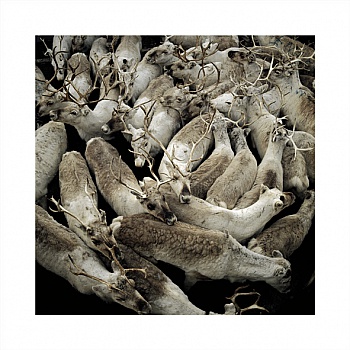 Leclere Maison de ventes consacrée entièrement à la photographie ancienne et contemporaine organise sa première vente. Les photographies peuvent être vues sur rendez-vous depuis le 5 mai et seront exposées le 20 mai de 10h à 20h et le 21mai 2011 de 10h à 12h.
La vente aura lieu le 21 mai à 14h30.
© Roger Picard (1931),Serge Gainsbourg, c.1970 Tirage postérieur,
signé et numéroté 6/15, tampon au dos. 40 x 50 cm. 400 - 600 €
© Gérard Rancinan (1953),The Maids of Honour (Les Menines), 2009 Tirage argentique sous diasec monté sur dibond,
signé et numéroté 4/12 au dos. 125 x 96 cm. Provenance : Galerie Brugier- Rigail.15 000 - 20 000...
Leclere Maison de ventes consacrée entièrement à la photographie ancienne et contemporaine organise sa première vente. Les photographies peuvent être vues sur rendez-vous depuis le 5 mai et seront exposées le 20 mai de 10h à 20h et le 21mai 2011 de 10h à 12h.
La vente aura lieu le 21 mai à 14h30.
© Roger Picard (1931),Serge Gainsbourg, c.1970 Tirage postérieur,
signé et numéroté 6/15, tampon au dos. 40 x 50 cm. 400 - 600 €
© Gérard Rancinan (1953),The Maids of Honour (Les Menines), 2009 Tirage argentique sous diasec monté sur dibond,
signé et numéroté 4/12 au dos. 125 x 96 cm. Provenance : Galerie Brugier- Rigail.15 000 - 20 000...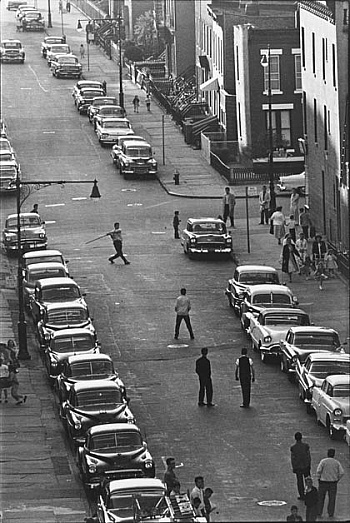 A mid-season Photographs sale composed of high-quality 20th and 21st Century works on January 31, 2008.
Viewing 25 - 30 January
25-26 January, 10am - 5pm
27 January, 12pm - 5pm
28-30 January, 10am - 5pm
Reception 24 January 6-8pm
Please view our Photographs catalogue online and read more about the sale on our website www.phillipsdepury.com.
...
A mid-season Photographs sale composed of high-quality 20th and 21st Century works on January 31, 2008.
Viewing 25 - 30 January
25-26 January, 10am - 5pm
27 January, 12pm - 5pm
28-30 January, 10am - 5pm
Reception 24 January 6-8pm
Please view our Photographs catalogue online and read more about the sale on our website www.phillipsdepury.com.
...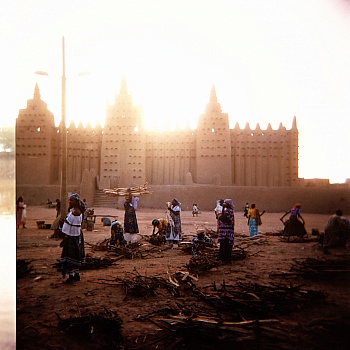 La 14° édition du Festival Photo de la Gacilly s'intéresse cette année à la photographie africaine et au face à face entre homme et animal.
© Eliott Erwitt / Magnum Photos
Seydou Keïta, Malick Sidibé, Mama Casset, Oumar Ly, Omar Victor Diop, Fatoumata Diabaté, Aïda Muluneh, James Barnor, Jean Depara, Baudouin Mouanda, Girma Berta, Akintunde Akinleye, Nyani Quarmyne, Sammy Baloji, François-Xavier Gbré, Arthur Rimbaud ou encore Elliott Erwitt, Eric Pillot, Michel Vanden Eeckhoudt, Rob MacInnis, Daniel Naudé, Brent Stirton, David Chancellor, Joel Sartore, Tim Flach, Paras Chandaria, Ed Alcock - Cdt 56, Emanuele Scorcelletti ainsi que Emmanuel Berthier et Phil Moore , sont le sartistes exposés.
...
La 14° édition du Festival Photo de la Gacilly s'intéresse cette année à la photographie africaine et au face à face entre homme et animal.
© Eliott Erwitt / Magnum Photos
Seydou Keïta, Malick Sidibé, Mama Casset, Oumar Ly, Omar Victor Diop, Fatoumata Diabaté, Aïda Muluneh, James Barnor, Jean Depara, Baudouin Mouanda, Girma Berta, Akintunde Akinleye, Nyani Quarmyne, Sammy Baloji, François-Xavier Gbré, Arthur Rimbaud ou encore Elliott Erwitt, Eric Pillot, Michel Vanden Eeckhoudt, Rob MacInnis, Daniel Naudé, Brent Stirton, David Chancellor, Joel Sartore, Tim Flach, Paras Chandaria, Ed Alcock - Cdt 56, Emanuele Scorcelletti ainsi que Emmanuel Berthier et Phil Moore , sont le sartistes exposés.
...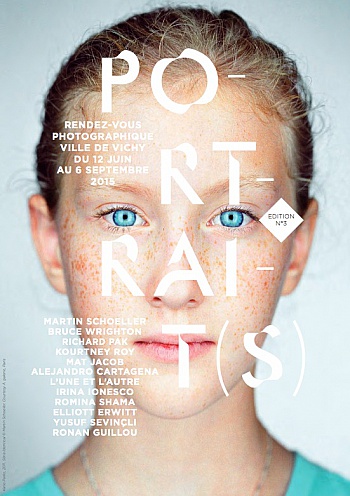 La ville de Vichy se met à l’heure de la photographie pour la troisième année consécutive avec "Portrait(s)". La manifestation, qui se tient du 12 juin au 6 septembre, est la seule en France à être centrée exclusivement sur l’art du portrait. Elle présente une pluralité de visions, célèbre toutes les formes de portraits, les plus classiques comme les plus inattendues. Elle s’appuie sur la tradition documentaire mais aussi sur des dispositifs plus conceptuels ou fictionnels, offrant un bouquet d’expositions à la fois exigeantes et grand public.
Le rendez-vous photographique "Portrait(s)" est une manifestation internationale qui se tient simultanément en centre-ville, dans l’espace ...
La ville de Vichy se met à l’heure de la photographie pour la troisième année consécutive avec "Portrait(s)". La manifestation, qui se tient du 12 juin au 6 septembre, est la seule en France à être centrée exclusivement sur l’art du portrait. Elle présente une pluralité de visions, célèbre toutes les formes de portraits, les plus classiques comme les plus inattendues. Elle s’appuie sur la tradition documentaire mais aussi sur des dispositifs plus conceptuels ou fictionnels, offrant un bouquet d’expositions à la fois exigeantes et grand public.
Le rendez-vous photographique "Portrait(s)" est une manifestation internationale qui se tient simultanément en centre-ville, dans l’espace ... La 4ème édition du Festival MADRIDFOTO 4 aura lieu du 7 au 10 juin 2012 à Madrid.
MADRIDFOTO 2012 : galleries, prizes and events in a new edition of these international contemporary photography fair.
The fourth edition of MADRIDFOTO will take place from the 7th to the 10th of June 2012 in a new location at Hall nr. 16 in Matadero Madrid.
MADRIDFOTO contributes to complete the wide offer of exhibitions and engaging activities programmed around photography in Madrid during those days. Over 40 specialized galleries from all over the world will bring to Madrid the best works in the contemporary scene.
Besides designing a very stimulating collectors’ program, Art Fairs, organizing company of MADRIDFOTO, has secured acquisition commitments by instituti...
La 4ème édition du Festival MADRIDFOTO 4 aura lieu du 7 au 10 juin 2012 à Madrid.
MADRIDFOTO 2012 : galleries, prizes and events in a new edition of these international contemporary photography fair.
The fourth edition of MADRIDFOTO will take place from the 7th to the 10th of June 2012 in a new location at Hall nr. 16 in Matadero Madrid.
MADRIDFOTO contributes to complete the wide offer of exhibitions and engaging activities programmed around photography in Madrid during those days. Over 40 specialized galleries from all over the world will bring to Madrid the best works in the contemporary scene.
Besides designing a very stimulating collectors’ program, Art Fairs, organizing company of MADRIDFOTO, has secured acquisition commitments by instituti... Plus de 250 exposants en provenance du monde entier sont invités à présenter chacun un artiste.
La sélection a été faite par un comité scientifique composé de 3/3 Photographic Projects, un studio de recherche en image photographique, Gigliola Foschi, journaliste et organisateur de foire, Elio Grazioli, critique d'art contemporain et également organisateur de foire et enfin Enrica Vigano, critique photographique et commissaire d'expositions dédiées à la photographie.
After the great success of the first edition in terms of public - over 15,000 visitors - and sales, MIA – Milan Image Art Fair, the photography and video art event conceived and directed by Fabio Castelli, returns on 4th-6th May 2012 at Superstudio...
Plus de 250 exposants en provenance du monde entier sont invités à présenter chacun un artiste.
La sélection a été faite par un comité scientifique composé de 3/3 Photographic Projects, un studio de recherche en image photographique, Gigliola Foschi, journaliste et organisateur de foire, Elio Grazioli, critique d'art contemporain et également organisateur de foire et enfin Enrica Vigano, critique photographique et commissaire d'expositions dédiées à la photographie.
After the great success of the first edition in terms of public - over 15,000 visitors - and sales, MIA – Milan Image Art Fair, the photography and video art event conceived and directed by Fabio Castelli, returns on 4th-6th May 2012 at Superstudio... Le Festival MADRIDFOTO 2011 aura lieu à Madrid du 5 au 8 mai 2011. Nous annonçons ci-dessous le contenu de cette troisième édition du festival, qui se concentre sur la photographie contemporaine et accorde une place notable aux galeries parisiennes (Galerie Magnum, Galerie VU', Baudouin Lebon, Polka Galerie), tout en faisant de Baudouin Lebon un des responsables du Festival.
Fifty exhibitors - galleries, publishing houses and collaborating companies - from 20 cities around the world, including Paris, London, New York, Los Angeles, Madrid and Barcelona, comprise the list of participants in MADRIDFOTO3.
The fair will bring to Madrid creations by renowned photographers such as Bleda y Rosa, Candida Höfer, Günther Förg, Helena Almeida, Henri Cartier-Bresson, Isabel Mu...
Le Festival MADRIDFOTO 2011 aura lieu à Madrid du 5 au 8 mai 2011. Nous annonçons ci-dessous le contenu de cette troisième édition du festival, qui se concentre sur la photographie contemporaine et accorde une place notable aux galeries parisiennes (Galerie Magnum, Galerie VU', Baudouin Lebon, Polka Galerie), tout en faisant de Baudouin Lebon un des responsables du Festival.
Fifty exhibitors - galleries, publishing houses and collaborating companies - from 20 cities around the world, including Paris, London, New York, Los Angeles, Madrid and Barcelona, comprise the list of participants in MADRIDFOTO3.
The fair will bring to Madrid creations by renowned photographers such as Bleda y Rosa, Candida Höfer, Günther Förg, Helena Almeida, Henri Cartier-Bresson, Isabel Mu... La première édition du festival de la photographie méditerranéenne Photomed, se tiendra à Sanary-sur-mer (Var) du 27 mai au 19 juin 2011.
«Un festival entre traditions et découvertes
Berceau de l’Antiquité, trait d’union entre les civilisations d’Europe, d’Afrique et d’Asie, la Méditerranée est le lieu de tous les contrastes et de toutes les passions. Mille fois décrites et chantées, ses rives ensoleillées ont de tout temps attiré écrivains, peintres et poètes. Mais si le « Grand Tour » (expression qui est à l’origine du mot tourisme) se perpétue aujourd’hui à travers le regard de photographes qui inscrivent leurs pas dans ceux...
La première édition du festival de la photographie méditerranéenne Photomed, se tiendra à Sanary-sur-mer (Var) du 27 mai au 19 juin 2011.
«Un festival entre traditions et découvertes
Berceau de l’Antiquité, trait d’union entre les civilisations d’Europe, d’Afrique et d’Asie, la Méditerranée est le lieu de tous les contrastes et de toutes les passions. Mille fois décrites et chantées, ses rives ensoleillées ont de tout temps attiré écrivains, peintres et poètes. Mais si le « Grand Tour » (expression qui est à l’origine du mot tourisme) se perpétue aujourd’hui à travers le regard de photographes qui inscrivent leurs pas dans ceux... Press release - The Robert Koch Gallery is pleased to present Elliott Erwitt, the gallery’s fourth solo exhibition of work by renowned New York photographer Elliott Erwitt. The photographs in this exhibition capture daily life with Erwitt’s trademark visual wit, as he documents serendipitous encounters between people and their surroundings. With a touch of humor and irony, as well as an eye for the humane, Elliott Erwitt's photographs reveal the most elemental and universal candid human emotions.
With an affecting social stance and acute observation, Erwitt is the archetype of the peripatetic photographer. Erwitt’s instantly recognizable images have adroitly chronicled the social landscape of Europe and the Americas for decades. John Szarkowski characterized Elliott Erwitt as &ldq...
Press release - The Robert Koch Gallery is pleased to present Elliott Erwitt, the gallery’s fourth solo exhibition of work by renowned New York photographer Elliott Erwitt. The photographs in this exhibition capture daily life with Erwitt’s trademark visual wit, as he documents serendipitous encounters between people and their surroundings. With a touch of humor and irony, as well as an eye for the humane, Elliott Erwitt's photographs reveal the most elemental and universal candid human emotions.
With an affecting social stance and acute observation, Erwitt is the archetype of the peripatetic photographer. Erwitt’s instantly recognizable images have adroitly chronicled the social landscape of Europe and the Americas for decades. John Szarkowski characterized Elliott Erwitt as &ldq...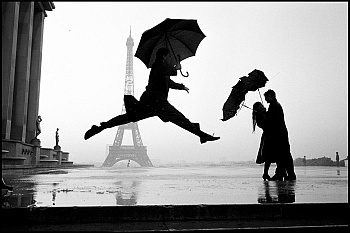 Communiqué de presse - Magnum Photos Gallery a le plaisir de vous présenter deux expositions majeures sur le thème de Paris. Sous l’angle de deux des plus grands photographes de l’agence Magnum, ces expositions dévoilent des différents points de vue de la ville.
C’est une histoire d’amour entre Herbert List et Paris, mais aussi l’histoire d’un exil. Dans cette exposition, dont le titre Paris Noir évoque le mystère, le photographe explore l’atmosphère parisienne de la n des années 1930, de jour et de nuit. Les endroits les plus chargés symboliquement de la ville de Paris sont transformés en sublimes compositions poétiques révélant des coins cachés et des détails souvent négligés. L’absence humaine ajoute un brin de dramatisme à c...
Communiqué de presse - Magnum Photos Gallery a le plaisir de vous présenter deux expositions majeures sur le thème de Paris. Sous l’angle de deux des plus grands photographes de l’agence Magnum, ces expositions dévoilent des différents points de vue de la ville.
C’est une histoire d’amour entre Herbert List et Paris, mais aussi l’histoire d’un exil. Dans cette exposition, dont le titre Paris Noir évoque le mystère, le photographe explore l’atmosphère parisienne de la n des années 1930, de jour et de nuit. Les endroits les plus chargés symboliquement de la ville de Paris sont transformés en sublimes compositions poétiques révélant des coins cachés et des détails souvent négligés. L’absence humaine ajoute un brin de dramatisme à c...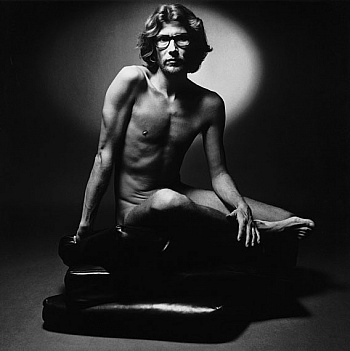 Photographs of the 60s and 70s from the Nicola Erni Collection
"Shoot! Shoot! Shoot!" is a collection of spectacular snapshots of a turbulent and legendary age in the history of art, music, fashion and film – the 1960s and ’70s. These decades were known for upheaval, provocation and creative energy. The Nicola Erni Collection, based in Zug, Switzerland, of which some 200 photographs are displayed here, takes visitors right into the heart of the vibrant cultural and party life that dominated the scene in New York, London and Paris. We penetrate this world through the lenses of the great photographers of the day, from Diane Arbus and Richard Avedon, Gary Winogrand, Helmut Newton, Annie Leibovitz to Robert Mapplethorpe. They trained their cameras on a range of celebrities including big names such as...
Photographs of the 60s and 70s from the Nicola Erni Collection
"Shoot! Shoot! Shoot!" is a collection of spectacular snapshots of a turbulent and legendary age in the history of art, music, fashion and film – the 1960s and ’70s. These decades were known for upheaval, provocation and creative energy. The Nicola Erni Collection, based in Zug, Switzerland, of which some 200 photographs are displayed here, takes visitors right into the heart of the vibrant cultural and party life that dominated the scene in New York, London and Paris. We penetrate this world through the lenses of the great photographers of the day, from Diane Arbus and Richard Avedon, Gary Winogrand, Helmut Newton, Annie Leibovitz to Robert Mapplethorpe. They trained their cameras on a range of celebrities including big names such as...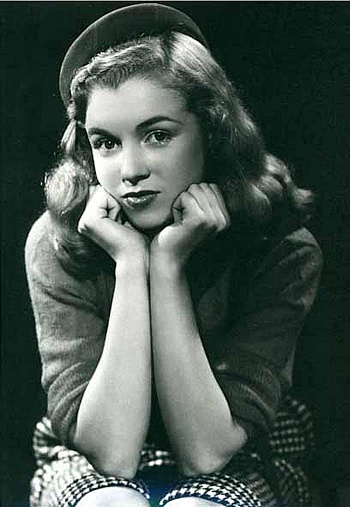 Press Release - Starting on November 4, 2016 the Berlin based galerie hiltawsky will present the exhibition Marilyn Monroe. 90th Anniversary. A Life in Pictures.
The group exhibition will showcase approx. 70 photographs, including some very rare images. Among them are an early photograph of a Valentine’s Day chocolate advertisement, Norma Jeane’s first cover photo for a U.S. magazine (Romance), the legendary “flying skirt” (by Elliott Erwitt and Bernard of Hollywood) for the film “The Seven Year Itch” and virtually unknown, very private photographs of Marilyn Monroe with the notable American writer Carl Sandburg by Arnold Newman and images of the legendary pool scene by Lawrence Schiller.
Marilyn Monroe (*June 1, 1926 in Los Angeles, California as Norma Jeane Mortenson, baptisma...
Press Release - Starting on November 4, 2016 the Berlin based galerie hiltawsky will present the exhibition Marilyn Monroe. 90th Anniversary. A Life in Pictures.
The group exhibition will showcase approx. 70 photographs, including some very rare images. Among them are an early photograph of a Valentine’s Day chocolate advertisement, Norma Jeane’s first cover photo for a U.S. magazine (Romance), the legendary “flying skirt” (by Elliott Erwitt and Bernard of Hollywood) for the film “The Seven Year Itch” and virtually unknown, very private photographs of Marilyn Monroe with the notable American writer Carl Sandburg by Arnold Newman and images of the legendary pool scene by Lawrence Schiller.
Marilyn Monroe (*June 1, 1926 in Los Angeles, California as Norma Jeane Mortenson, baptisma...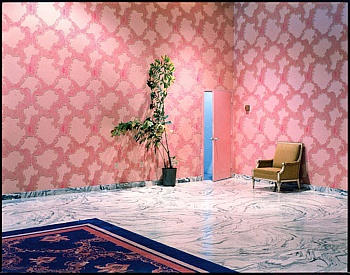 Press release
Edwynn Houk Gallery is pleased to present Elliott Erwitt: Kolor, the first comprehensive exhibition of the artist’s color photographs, on view 20 October - 19 November 2016.
A photographer since 1948, Elliott Erwitt’s early black and white photographs set a precedent for the genre of social landscape and anticipated the iconic imagery of Lee Friedlander, Garry Winogrand, and Robert Frank. Erwitt’s skill as a photographer is evident in his juxtaposition of elements within a frame. He creates relationships between people, places, and things, which reveal the world in a unique, humorous way. Throughout his distinguished career, he has taken some of the most memorable images of the 20th century including President John F. Kennedy, Marilyn Monroe, and Che Guevara. His personal pictures or...
Press release
Edwynn Houk Gallery is pleased to present Elliott Erwitt: Kolor, the first comprehensive exhibition of the artist’s color photographs, on view 20 October - 19 November 2016.
A photographer since 1948, Elliott Erwitt’s early black and white photographs set a precedent for the genre of social landscape and anticipated the iconic imagery of Lee Friedlander, Garry Winogrand, and Robert Frank. Erwitt’s skill as a photographer is evident in his juxtaposition of elements within a frame. He creates relationships between people, places, and things, which reveal the world in a unique, humorous way. Throughout his distinguished career, he has taken some of the most memorable images of the 20th century including President John F. Kennedy, Marilyn Monroe, and Che Guevara. His personal pictures or...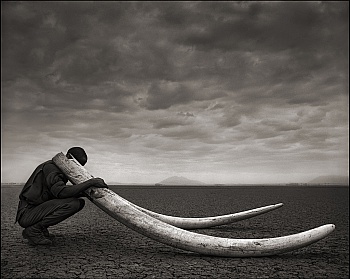 Atlas Gallery's press release
A new exhibition at Atlas Gallery will showcase the beauty of the platinum print through the work of diverse international photographers and artists from the early 20th century to the present day.
Platinum-palladium is a traditional printing technique, dating from the 19th century, favoured by photographers and collectors due to the tonal range of the prints. Platinum prints are amongst the most permanent man-made objects – it is thought that a platinum image, properly preserved, can last more than 5000 years.
The painterly quality of the platinum print was embraced by masters of photographer in the early 20th Century such as Edward Steichen and Alfred Stieglitz, who called the process ‘the prince of all media’. This quality, coupled with the tonal depth has le...
Atlas Gallery's press release
A new exhibition at Atlas Gallery will showcase the beauty of the platinum print through the work of diverse international photographers and artists from the early 20th century to the present day.
Platinum-palladium is a traditional printing technique, dating from the 19th century, favoured by photographers and collectors due to the tonal range of the prints. Platinum prints are amongst the most permanent man-made objects – it is thought that a platinum image, properly preserved, can last more than 5000 years.
The painterly quality of the platinum print was embraced by masters of photographer in the early 20th Century such as Edward Steichen and Alfred Stieglitz, who called the process ‘the prince of all media’. This quality, coupled with the tonal depth has le... Münchner Stadtmuseum's press release
"Shoot! Shoot! Shoot!" is a collection of spectacular snapshots of a turbulent and legendary age in the history of art, music, fashion and film – the 1960s and ’70s. These decades were known for upheaval, provocation and creative energy. The Nicola Erni Collection, based in Zug, Switzerland, of which some 200 photographs are displayed here, takes visitors right into the heart of the vibrant cultural and party life that dominated the scene in New York, London and Paris. We penetrate this world through the lenses of the great photographers of the day, from Diane Arbus and Richard Avedon, Gary Winogrand, Helmut Newton, Annie Leibovitz to Robert Mapplethorpe. They trained their cameras on a range of celebrities including big names such as Andy Warhol, The Be...
Münchner Stadtmuseum's press release
"Shoot! Shoot! Shoot!" is a collection of spectacular snapshots of a turbulent and legendary age in the history of art, music, fashion and film – the 1960s and ’70s. These decades were known for upheaval, provocation and creative energy. The Nicola Erni Collection, based in Zug, Switzerland, of which some 200 photographs are displayed here, takes visitors right into the heart of the vibrant cultural and party life that dominated the scene in New York, London and Paris. We penetrate this world through the lenses of the great photographers of the day, from Diane Arbus and Richard Avedon, Gary Winogrand, Helmut Newton, Annie Leibovitz to Robert Mapplethorpe. They trained their cameras on a range of celebrities including big names such as Andy Warhol, The Be...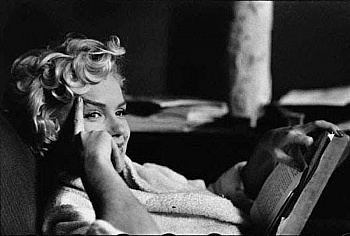 About twenty years ago Elliott Erwitt half retired. He reined in what he calls "assignment photography" - magazine photojournalism, corporate image making, and advertising - to devote his energies full time to what he calls his "hobby", the personal pictures that long time Museum of Modern Art photography department director John Szarkowski called "unmemorable occasions [where] Erwitt has distilled with wit and clarity and grace, the indecisive moment".
© Elliott Erwitt
ln the years since, museum exhibits, gallery shows, and monographs have secured his place as one of the most important photographic artists of the age. These hobby photos, however, always made in black and white, have obscured a body of work, largely in color, that was the output of his professional life and ...
About twenty years ago Elliott Erwitt half retired. He reined in what he calls "assignment photography" - magazine photojournalism, corporate image making, and advertising - to devote his energies full time to what he calls his "hobby", the personal pictures that long time Museum of Modern Art photography department director John Szarkowski called "unmemorable occasions [where] Erwitt has distilled with wit and clarity and grace, the indecisive moment".
© Elliott Erwitt
ln the years since, museum exhibits, gallery shows, and monographs have secured his place as one of the most important photographic artists of the age. These hobby photos, however, always made in black and white, have obscured a body of work, largely in color, that was the output of his professional life and ...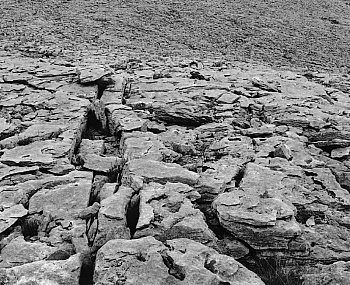 Hors sa collection permanente au sein de laquelle l’on compte un ensemble de photographies de réputation internationale, le Groupe Lhoist a passé, depuis plusieurs années, commande à des photographes renommés afin d’illustrer l’étendue de son activité à travers le monde. Ce sont ainsi les photographes Roy Arden, Bernd & Hilla Becher, Elliott Erwitt, Rodney Graham, Jan Henle et Josef Koudelka qui ont été sollicités, témoignant du volet humain, industriel et paysager du groupe Lhoist. C’est une large sélection de ces commandes qui sera exposée au Musée de la Photographie, du 12 décembre 2015 au 22 mai 2016.
Par ailleurs, le groupe Lhoist a également collecté un ensembl...
Hors sa collection permanente au sein de laquelle l’on compte un ensemble de photographies de réputation internationale, le Groupe Lhoist a passé, depuis plusieurs années, commande à des photographes renommés afin d’illustrer l’étendue de son activité à travers le monde. Ce sont ainsi les photographes Roy Arden, Bernd & Hilla Becher, Elliott Erwitt, Rodney Graham, Jan Henle et Josef Koudelka qui ont été sollicités, témoignant du volet humain, industriel et paysager du groupe Lhoist. C’est une large sélection de ces commandes qui sera exposée au Musée de la Photographie, du 12 décembre 2015 au 22 mai 2016.
Par ailleurs, le groupe Lhoist a également collecté un ensembl... The Lumiere Brothers Center for Photography is pleased to announce an exhibition of one of the most important photographers of XX century - Elliott Erwitt. 45 color-photographs – mostly Kodachrome and Ektachrome - that haven’t been shown to the wide audience yet will be displayed at the Small Hall of the Lumiere Center.
Born in France from Russian parents, educated in Italy and successively immigrated in the US, New York based Elliott Erwtt has a background as eclectic as his personality. Photographer, director, producer, Erwitt worked with some of the most influential photographers of the mid century, like Robert Capa, and for leading newspapers and magazines. The exhibition will feature Erwitt’s professional photography spanning four decades (from 1950s through the early 1990s) of magazine photojou...
The Lumiere Brothers Center for Photography is pleased to announce an exhibition of one of the most important photographers of XX century - Elliott Erwitt. 45 color-photographs – mostly Kodachrome and Ektachrome - that haven’t been shown to the wide audience yet will be displayed at the Small Hall of the Lumiere Center.
Born in France from Russian parents, educated in Italy and successively immigrated in the US, New York based Elliott Erwtt has a background as eclectic as his personality. Photographer, director, producer, Erwitt worked with some of the most influential photographers of the mid century, like Robert Capa, and for leading newspapers and magazines. The exhibition will feature Erwitt’s professional photography spanning four decades (from 1950s through the early 1990s) of magazine photojou... “Making people laugh is one of the highest achievements you can have. And when you can make someone laugh and cry, alternately, as Chaplin does, now that's the highest of all possible achievements. I don't know that I aim for it, but I recognize it as the supreme goal.”
PDNB Gallery is proud to announce its first solo show for one of the great masters of photography from the 20th Century, Elliott Erwitt (Elio Romano Erwitt, French born, 1928). This celebrated artist has created memorable images since he was a teen. Erwitt's Russian parents lived in Paris when he was born, they then moved to Italy. Erwitt spoke Russian, French and Italian before moving at the age of eleven to New York. The constant demand to learn new languages could have helped promote his visual acumen, which enabled him to re...
“Making people laugh is one of the highest achievements you can have. And when you can make someone laugh and cry, alternately, as Chaplin does, now that's the highest of all possible achievements. I don't know that I aim for it, but I recognize it as the supreme goal.”
PDNB Gallery is proud to announce its first solo show for one of the great masters of photography from the 20th Century, Elliott Erwitt (Elio Romano Erwitt, French born, 1928). This celebrated artist has created memorable images since he was a teen. Erwitt's Russian parents lived in Paris when he was born, they then moved to Italy. Erwitt spoke Russian, French and Italian before moving at the age of eleven to New York. The constant demand to learn new languages could have helped promote his visual acumen, which enabled him to re... La ville de Vichy se met à l’heure de la photographie pour la troisième année consécutive avec “Portrait(s)”. La manifestation, qui se tient du 12 juin au 6 septembre, est la seule en France à être centrée exclusivement sur l’art du portrait. Elle présente une pluralité de visions, célèbre toutes les formes de portraits, les plus classiques comme les plus inattendues. Elle s’appuie sur la tradition documentaire mais aussi sur des dispositifs plus conceptuels ou fictionnels, offrant un bouquet d’expositions à la fois exigeantes et grand public.
Série Identical © Martin Schoeller. Courtesy A. galerie, Paris
© Alejandro Cartagena, Série Car Poolers
Le ren...
La ville de Vichy se met à l’heure de la photographie pour la troisième année consécutive avec “Portrait(s)”. La manifestation, qui se tient du 12 juin au 6 septembre, est la seule en France à être centrée exclusivement sur l’art du portrait. Elle présente une pluralité de visions, célèbre toutes les formes de portraits, les plus classiques comme les plus inattendues. Elle s’appuie sur la tradition documentaire mais aussi sur des dispositifs plus conceptuels ou fictionnels, offrant un bouquet d’expositions à la fois exigeantes et grand public.
Série Identical © Martin Schoeller. Courtesy A. galerie, Paris
© Alejandro Cartagena, Série Car Poolers
Le ren...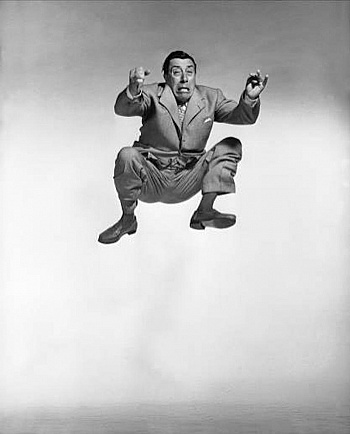 Aficionados de photographie, à vos agendas ! Après le succès du photobooth « Picture yourself » du 28 mars, Bercy Village poursuit son hommage dédié aux légendes du 8e art avec l'exposition « Magnum Photos, histoires de portraits », du 4 juin au 30 août 2015, dans les passages couverts de Bercy Village. Le public pourra découvrir cet été une vingtaine de clichés de trois photographes emblématiques de l'agence Magnum Photos, Philippe Halsman, Elliott Erwitt et Bruce Gilden, accompagnés des quarante portraits les plus réussis, réalisés lors de la journée « Picture yourself ». Une exposition à explorer après un déjeuner en terrasse, à l&...
Aficionados de photographie, à vos agendas ! Après le succès du photobooth « Picture yourself » du 28 mars, Bercy Village poursuit son hommage dédié aux légendes du 8e art avec l'exposition « Magnum Photos, histoires de portraits », du 4 juin au 30 août 2015, dans les passages couverts de Bercy Village. Le public pourra découvrir cet été une vingtaine de clichés de trois photographes emblématiques de l'agence Magnum Photos, Philippe Halsman, Elliott Erwitt et Bruce Gilden, accompagnés des quarante portraits les plus réussis, réalisés lors de la journée « Picture yourself ». Une exposition à explorer après un déjeuner en terrasse, à l&... Curated by Galerie Esther Woerdehoff, Paris and Mirjam Cavegn, Bildhalle, Drive In is an exhibition about cars, showing the approach of this subject by numerous photographers, from the fifties to nowadays.
When Elliott Erwitt, during and after the depression era, photographed those rolling dreams with his candid sense of humor and irony, cars, especially the very large and imposing ones, were already a landmark in the American landscape. When René Burri travelled to Brazil to document the building of modern cities, one of his most stunning photographs, «Men on a roof top, Sao Paulo, 1960», is a view of the rush hour traffic on a busy street. Simone Kappeler, another Swiss photographer, drove through America in 1981, 30 years after her fellow countryman Robert Frank, and took pictures with her Hassel...
Curated by Galerie Esther Woerdehoff, Paris and Mirjam Cavegn, Bildhalle, Drive In is an exhibition about cars, showing the approach of this subject by numerous photographers, from the fifties to nowadays.
When Elliott Erwitt, during and after the depression era, photographed those rolling dreams with his candid sense of humor and irony, cars, especially the very large and imposing ones, were already a landmark in the American landscape. When René Burri travelled to Brazil to document the building of modern cities, one of his most stunning photographs, «Men on a roof top, Sao Paulo, 1960», is a view of the rush hour traffic on a busy street. Simone Kappeler, another Swiss photographer, drove through America in 1981, 30 years after her fellow countryman Robert Frank, and took pictures with her Hassel...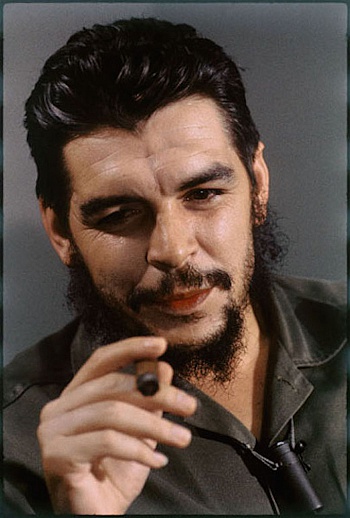 In focus gallery will celebrate its 25th gallery annivesary in January, 2015. In Germany there are only few galleries who have presented more than 25 years in a continuous work photography as art. During the past 25 years the gallerist Burkhard Arnold introduced in more than 140 exhibitions beside famous photographers as for example just passed away Lucien Clergue, Bruce Davidson, Elliott Erwitt, Franco Fontana, Greg Gorman, F.C. Gundlach, Thomas Hoepker, Susan Meiselas, Marc Riboud, Willy Ronis, Jan Saudek or Jeanloup Sieff also many new talents like Peikwen Cheng, Thomas Kellner, Vadim Gushchin, Arno Rafael Minkkinen, Hans-Jürgen Raabe, William Ropp or Susan Dobson partly for the first time in Germany.
© Elliott Erwitt - California, USA (1956) Magnum photos
The jubilee exhibition in January, 2015 wi...
In focus gallery will celebrate its 25th gallery annivesary in January, 2015. In Germany there are only few galleries who have presented more than 25 years in a continuous work photography as art. During the past 25 years the gallerist Burkhard Arnold introduced in more than 140 exhibitions beside famous photographers as for example just passed away Lucien Clergue, Bruce Davidson, Elliott Erwitt, Franco Fontana, Greg Gorman, F.C. Gundlach, Thomas Hoepker, Susan Meiselas, Marc Riboud, Willy Ronis, Jan Saudek or Jeanloup Sieff also many new talents like Peikwen Cheng, Thomas Kellner, Vadim Gushchin, Arno Rafael Minkkinen, Hans-Jürgen Raabe, William Ropp or Susan Dobson partly for the first time in Germany.
© Elliott Erwitt - California, USA (1956) Magnum photos
The jubilee exhibition in January, 2015 wi...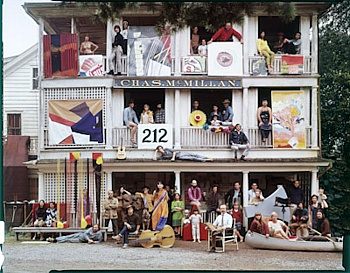 Pour célébrer la sortie de « Regarding Women », le nouveau livre d’Elliott Erwitt (Editions Te Neues), A.galerie vous propose voir ou revoir le travail d’un des + grands photographes du monde, membre éminent de la célèbre agence Magnum. Riche de 43 tirages originaux, allant du 28x35cm au 76x102cm, « More Than Women » est articulée sur 3 idées :
1 – Montrer quelques-unes des plus belles images de « Regarding Women ».
2 – Montrer quelques-unes des plus célèbres icônes d’Elliott Erwitt.
3 – Montrer des images inédites ou peu connues comme par exemple le travail couleur d’EE (11 tirages)
© Elliott Erwitt
Biographie :
Elliott Erwitt est né ...
Pour célébrer la sortie de « Regarding Women », le nouveau livre d’Elliott Erwitt (Editions Te Neues), A.galerie vous propose voir ou revoir le travail d’un des + grands photographes du monde, membre éminent de la célèbre agence Magnum. Riche de 43 tirages originaux, allant du 28x35cm au 76x102cm, « More Than Women » est articulée sur 3 idées :
1 – Montrer quelques-unes des plus belles images de « Regarding Women ».
2 – Montrer quelques-unes des plus célèbres icônes d’Elliott Erwitt.
3 – Montrer des images inédites ou peu connues comme par exemple le travail couleur d’EE (11 tirages)
© Elliott Erwitt
Biographie :
Elliott Erwitt est né ...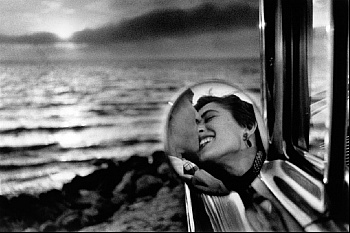 "Celebrated" will showcase important and iconic works from internationally renowned photographers; through exhibiting a variety of photographers each capturing diverse subject matter the exhibition aims to illustrate the varying forms that the photographic image can take and offer something for everyone during the holiday season. Included in the show will be abstract works by Bill Brandt, Andreas Gefeller and Niko Luoma alongside black and white reportage photographs by Henri Cartier-Bresson and Robert Frank.
A particular highlight in this exhibition will be the works of Magnum photographer, Elliott Erwitt, who eloquently captures the whimsical and the humorous in everyday life and his works will form a significant part of the exhibition. Highlights include the romantic "Eiffel Tower, Paris, 1989" ...
"Celebrated" will showcase important and iconic works from internationally renowned photographers; through exhibiting a variety of photographers each capturing diverse subject matter the exhibition aims to illustrate the varying forms that the photographic image can take and offer something for everyone during the holiday season. Included in the show will be abstract works by Bill Brandt, Andreas Gefeller and Niko Luoma alongside black and white reportage photographs by Henri Cartier-Bresson and Robert Frank.
A particular highlight in this exhibition will be the works of Magnum photographer, Elliott Erwitt, who eloquently captures the whimsical and the humorous in everyday life and his works will form a significant part of the exhibition. Highlights include the romantic "Eiffel Tower, Paris, 1989" ...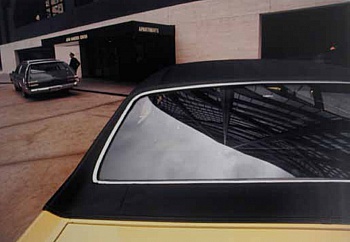 Curated by Galerie Esther Woerdehoff, Drive-In is an exhibition about cars, showing the approach of this subject by numerous photographers, from the fifties to nowadays.
When Elliott Erwitt, during and after the depression era, photographed those rolling dreams with his candid sense of humor and irony, cars, especially the very large and imposing ones, were already a landmark in the American landscape. In the early fifties, when Swiss photographer Robert Frank, thanks to a Guggenheim fellowship grant, drove his car across America for two years, he had his family with him. The picture of his wife Mary and their two children, totally exhausted and half asleep in the car, is an iconic image in the history of photography.
When René Burri travelled to Brazil to document the building of modern cities, one of his mos...
Curated by Galerie Esther Woerdehoff, Drive-In is an exhibition about cars, showing the approach of this subject by numerous photographers, from the fifties to nowadays.
When Elliott Erwitt, during and after the depression era, photographed those rolling dreams with his candid sense of humor and irony, cars, especially the very large and imposing ones, were already a landmark in the American landscape. In the early fifties, when Swiss photographer Robert Frank, thanks to a Guggenheim fellowship grant, drove his car across America for two years, he had his family with him. The picture of his wife Mary and their two children, totally exhausted and half asleep in the car, is an iconic image in the history of photography.
When René Burri travelled to Brazil to document the building of modern cities, one of his mos...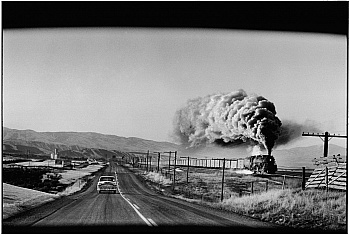 Imaginée par la Galerie Esther Woerdehoff, Drive-In est une exposition de photographies sur le thème de la voiture, montrant l’approche de ce sujet par une vingtaine d’artistes, des années cinquante à nos jours.
A l’époque de la grande dépression, les voitures, grandes et imposantes, sont déjà un symbole dans le paysage américain et Elliott Erwitt photographie ces rêves sur roues avec son sens de l’humour habituel, une certaine candeur et beaucoup d’ironie. Quand le photographe suisse Robert Frank, grâce à une bourse du Musée Guggenheim, conduit sa voiture à travers l’Amérique pendant deux ans au début des années 50, il voyage ...
Imaginée par la Galerie Esther Woerdehoff, Drive-In est une exposition de photographies sur le thème de la voiture, montrant l’approche de ce sujet par une vingtaine d’artistes, des années cinquante à nos jours.
A l’époque de la grande dépression, les voitures, grandes et imposantes, sont déjà un symbole dans le paysage américain et Elliott Erwitt photographie ces rêves sur roues avec son sens de l’humour habituel, une certaine candeur et beaucoup d’ironie. Quand le photographe suisse Robert Frank, grâce à une bourse du Musée Guggenheim, conduit sa voiture à travers l’Amérique pendant deux ans au début des années 50, il voyage ... To look upon someone extraordinary, who has achieved greatness against great odds. To be moved by an image of one who has touched upon the lives of thousands. To seek knowledge and understanding. To find inspiration.
These are the experiences we seek when confronted by a great portrait. The figures captured in this exhibition were extraordinary, exuding character and living lives of triumph and disaster. The photographers who captured their essence, by necessity required a technical prowess but more importantly possess depth, empathy and pursue a true understanding of the human condition.
Portraits are certainly the great power in photography. They are the great confluence of documentary and artistry. Our natural voyeuristic condition draws us in and the medium allows us to feel an element of intimacy. A great...
To look upon someone extraordinary, who has achieved greatness against great odds. To be moved by an image of one who has touched upon the lives of thousands. To seek knowledge and understanding. To find inspiration.
These are the experiences we seek when confronted by a great portrait. The figures captured in this exhibition were extraordinary, exuding character and living lives of triumph and disaster. The photographers who captured their essence, by necessity required a technical prowess but more importantly possess depth, empathy and pursue a true understanding of the human condition.
Portraits are certainly the great power in photography. They are the great confluence of documentary and artistry. Our natural voyeuristic condition draws us in and the medium allows us to feel an element of intimacy. A great...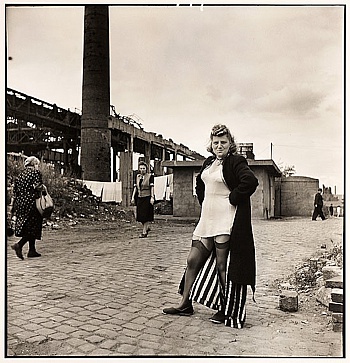 Until today Magnum stands for documentary photography of the highest standard. Robert Capa, Henri Cartier-Bresson, George Rodger and David Seymour (Chim) founded the legendary photo agency in 1947, with the aim to work independently in a motivated cooperative of likeminded photographers - as reporters, commentators and poets with a camera. The decisive moment and Human Interest became the central paradigms of this group.
The exhibition IN OUR TIME opens a time window to the first forty years of Magnum with photographs of the five initiators and fifty other members, such as Werner Bischof, Ernst Haas, Erich Lessing, Eve Arnold, Marc Riboud, Elliott Erwitt, Inge Morath, René Burri, Bruce Davidson, Constantine Manos, Burk Uzzle, Hiroji Kubota, Bruno Barbey, Josef Koudelka, Gilles Peress, Mary Ellen Mark, Susa...
Until today Magnum stands for documentary photography of the highest standard. Robert Capa, Henri Cartier-Bresson, George Rodger and David Seymour (Chim) founded the legendary photo agency in 1947, with the aim to work independently in a motivated cooperative of likeminded photographers - as reporters, commentators and poets with a camera. The decisive moment and Human Interest became the central paradigms of this group.
The exhibition IN OUR TIME opens a time window to the first forty years of Magnum with photographs of the five initiators and fifty other members, such as Werner Bischof, Ernst Haas, Erich Lessing, Eve Arnold, Marc Riboud, Elliott Erwitt, Inge Morath, René Burri, Bruce Davidson, Constantine Manos, Burk Uzzle, Hiroji Kubota, Bruno Barbey, Josef Koudelka, Gilles Peress, Mary Ellen Mark, Susa... Depuis que Baudelaire a violemment condamné la photographie qui ne saurait être qualifiée de pratique artistique tant» le goût du Vrai y opprime le goût du Beau «, la question de la représentation du réel ne cesse de se poser. Une analyse des œuvres issues de la collection de la Fnac permet d’aborder cette question et de comprendre les diverses modalités ainsi mises en œuvre pour se libérer du réel et aborder le monde avec un autre regard qui souvent associe l’imaginaire, l’étrange, l’étonnement ou l’humour.
Tout d’abord, la nature elle-même peut nous intriguer par une apparition surprenante, telle cette émouvante image de gémelléité de Jane Atwood qui ainsi répète ce qui aurait dû rester unique. Qu’il s’a...
Depuis que Baudelaire a violemment condamné la photographie qui ne saurait être qualifiée de pratique artistique tant» le goût du Vrai y opprime le goût du Beau «, la question de la représentation du réel ne cesse de se poser. Une analyse des œuvres issues de la collection de la Fnac permet d’aborder cette question et de comprendre les diverses modalités ainsi mises en œuvre pour se libérer du réel et aborder le monde avec un autre regard qui souvent associe l’imaginaire, l’étrange, l’étonnement ou l’humour.
Tout d’abord, la nature elle-même peut nous intriguer par une apparition surprenante, telle cette émouvante image de gémelléité de Jane Atwood qui ainsi répète ce qui aurait dû rester unique. Qu’il s’a...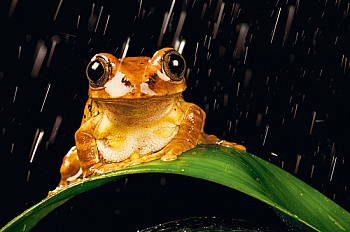 46 photos trempées des plus grands noms de la photo : Robert Doisneau, Elliott Erwitt, Jean Gaumy, Guy Le Querrec, Marie-Paule Nègre, Willy Ronis, Sebastiao Salgado, Carl de Keyzer, Martin Parr, Steve Mac Curry, et bien d'autres ...
© Marie-Paule Nègre / Signatures : À fleur de l’eau, baignade en mer (2005)
Des stars aux anonymes... De James Dean à la reine d’Angleterre en passant par Catherine Deneuve... Après les toilettes, le bain ou la douche (expositions Chiottissime ! 2010, Tout baigne ! 2011), tous sous l’eau, de nouveau à «Paris Bastille» dès la rentrée avec Ciel il pleut ! le rendez-vous culturel du SIAAP (Syndicat interdépartemental pour l’assainissement de ...
46 photos trempées des plus grands noms de la photo : Robert Doisneau, Elliott Erwitt, Jean Gaumy, Guy Le Querrec, Marie-Paule Nègre, Willy Ronis, Sebastiao Salgado, Carl de Keyzer, Martin Parr, Steve Mac Curry, et bien d'autres ...
© Marie-Paule Nègre / Signatures : À fleur de l’eau, baignade en mer (2005)
Des stars aux anonymes... De James Dean à la reine d’Angleterre en passant par Catherine Deneuve... Après les toilettes, le bain ou la douche (expositions Chiottissime ! 2010, Tout baigne ! 2011), tous sous l’eau, de nouveau à «Paris Bastille» dès la rentrée avec Ciel il pleut ! le rendez-vous culturel du SIAAP (Syndicat interdépartemental pour l’assainissement de ... Les photographes de la coopérative Magnum Photos se réunissent chaque année à New York, Paris ou Londres, alternativement. Pour fêter son 65e anniversaire, l’agence de presse a décidé de se réunir à Arles pour la première fois.
La présence de ces merveilleux photographes est exceptionnelle, d’où notre envie de leur consacrer pendant la semaine d’ouverture toutes les deuxièmes parties de soirées du théâtre Antique.
Le milo du soir en première partie chaque soir
Christian Milovanoff, photographe enseignant à l’École Nationale Supérieure de la Photographie d’Arles depuis sa création, a eu un rôle majeur sur toutes les promotions sort...
Les photographes de la coopérative Magnum Photos se réunissent chaque année à New York, Paris ou Londres, alternativement. Pour fêter son 65e anniversaire, l’agence de presse a décidé de se réunir à Arles pour la première fois.
La présence de ces merveilleux photographes est exceptionnelle, d’où notre envie de leur consacrer pendant la semaine d’ouverture toutes les deuxièmes parties de soirées du théâtre Antique.
Le milo du soir en première partie chaque soir
Christian Milovanoff, photographe enseignant à l’École Nationale Supérieure de la Photographie d’Arles depuis sa création, a eu un rôle majeur sur toutes les promotions sort...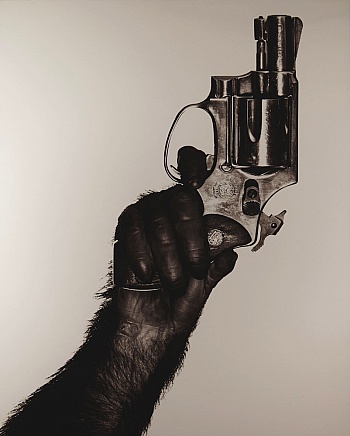 En 2011, le marché de la photographie a continué à susciter un vif intérêt de la part des collectionneurs et institutions européens.
Exposition publique : Salle 9, Mercredi 23 mai de 11h à 18h et Jeudi 24 mai de 11h à 12h
A 14h, la vente du 24 mai à l'Hôtel Drouot, en salle 9, organisée par Maître Le Mouël et Viviane Esders, Expert, présente une section consacrée au XIXe siècle avec deux rares portraits de Julia Margaret Cameron (Mary Hillier) vers 1865.
Trois images emblématiques de Gustave Le Gray dont « la Grande Vague » de 1857.
Sept tirages d’Edouard Denis Baldus sur les « Inondations d’Avignon » en 1856 et la « Tour Magne de Nîmes &r...
En 2011, le marché de la photographie a continué à susciter un vif intérêt de la part des collectionneurs et institutions européens.
Exposition publique : Salle 9, Mercredi 23 mai de 11h à 18h et Jeudi 24 mai de 11h à 12h
A 14h, la vente du 24 mai à l'Hôtel Drouot, en salle 9, organisée par Maître Le Mouël et Viviane Esders, Expert, présente une section consacrée au XIXe siècle avec deux rares portraits de Julia Margaret Cameron (Mary Hillier) vers 1865.
Trois images emblématiques de Gustave Le Gray dont « la Grande Vague » de 1857.
Sept tirages d’Edouard Denis Baldus sur les « Inondations d’Avignon » en 1856 et la « Tour Magne de Nîmes &r...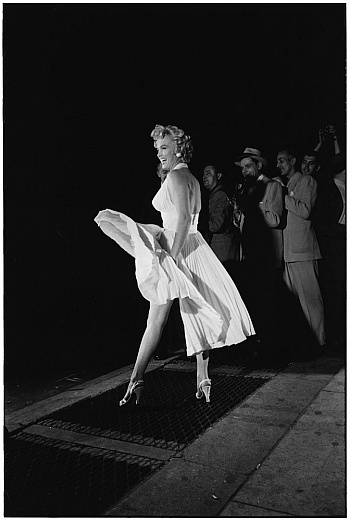 « Pour être Elliott vous devez avoir (1) un instinct exquis non seulement du moment mais aussi de ce qui peut se passer le moment même qui suit. (2) Un point de vue sympathique mais sans encombre du monde comme un feuilleton sans fin de mini comédies et drames. […] Il faut aussi être né à Paris [1928] de parents juifs russes émigrés, s’être échappé de l’Italie pour fuir Mussolini, avoir été élevé en Californie, parler au moins quatre langues et savoir être effacé au point d’en devenir transparent. […] Dans Sequentially Yours, Elliott a crée une nouvelle forme intermédiaire entre les photos simples et les films. Nous les metteurs en scène, nous avon...
« Pour être Elliott vous devez avoir (1) un instinct exquis non seulement du moment mais aussi de ce qui peut se passer le moment même qui suit. (2) Un point de vue sympathique mais sans encombre du monde comme un feuilleton sans fin de mini comédies et drames. […] Il faut aussi être né à Paris [1928] de parents juifs russes émigrés, s’être échappé de l’Italie pour fuir Mussolini, avoir été élevé en Californie, parler au moins quatre langues et savoir être effacé au point d’en devenir transparent. […] Dans Sequentially Yours, Elliott a crée une nouvelle forme intermédiaire entre les photos simples et les films. Nous les metteurs en scène, nous avon... A l'occasion son ouverture, la galerie Tarquinia, une galerie spécialisée dans la photographie équestre, offre une carte blanche au photographe et éditeur Robert Delpire.
«Robert Delpire connaît bien – c’est un euphémisme – la photo, et ce n’est pas un inconvénient ; mais il ne connaît pas grand-chose aux chevaux, et c’est plutôt un avantage ! S’il avait été, en effet, un connaisseur, un hippologue, un hippolâtre, on aurait eu un ouvrage ennuyeux de plus, un de ces “beaux-livres”, comme on dit, du genre de ceux que la plupart des éditeurs se croient obligés de proposer chaque année au moment des étrennes, sur “le monde-merveilleux-des poneys&rdq...
A l'occasion son ouverture, la galerie Tarquinia, une galerie spécialisée dans la photographie équestre, offre une carte blanche au photographe et éditeur Robert Delpire.
«Robert Delpire connaît bien – c’est un euphémisme – la photo, et ce n’est pas un inconvénient ; mais il ne connaît pas grand-chose aux chevaux, et c’est plutôt un avantage ! S’il avait été, en effet, un connaisseur, un hippologue, un hippolâtre, on aurait eu un ouvrage ennuyeux de plus, un de ces “beaux-livres”, comme on dit, du genre de ceux que la plupart des éditeurs se croient obligés de proposer chaque année au moment des étrennes, sur “le monde-merveilleux-des poneys&rdq...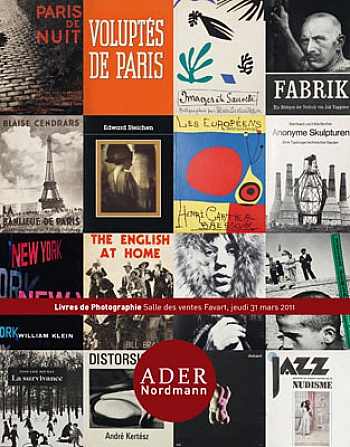 Près de 300 livres provenant de bibliothèques privées, dont celles de l’écrivain Patrick Roegiers ou de la photographe Yvette Troispoux.
Les livres proposés sont, pour la plupart, signés ou accompagnés de tirages, articles d’époque, notes et dossiers de presse.
Exposition à l’étude ADER, salle des ventes Favart
3, rue Favart 75002 Paris
Mardi 29 mars de 11 h à 18 h
Mercredi 30 mars de 11 h à 18 h
Jeudi 31 mars de 11 h à 12 h
Téléphone pendant la vente : 01 53 40 77 10
...
Près de 300 livres provenant de bibliothèques privées, dont celles de l’écrivain Patrick Roegiers ou de la photographe Yvette Troispoux.
Les livres proposés sont, pour la plupart, signés ou accompagnés de tirages, articles d’époque, notes et dossiers de presse.
Exposition à l’étude ADER, salle des ventes Favart
3, rue Favart 75002 Paris
Mardi 29 mars de 11 h à 18 h
Mercredi 30 mars de 11 h à 18 h
Jeudi 31 mars de 11 h à 12 h
Téléphone pendant la vente : 01 53 40 77 10
... Elliott Erwitt, featuring his popular photographic comic strips. Erwitt’s photo-sequences are presented as little sketches, almost like stills from a film, depicting episodes and anecdotes of daily life, as they unfold, in front of his camera and inviting the viewer’s imagination to embellish the scenes with personal details. Here, more than ever, we see Erwitt as the ironist, revealing things in the human condition and the commonplace that evoke humour and playfulness.
The black and white prints made up of between two to sometimes as many as twenty separate frames, capture non-events, seemingly insignificant happenings shot in spare moments on or between assignments across the globe. Part of their brilliance lies in the apparent ease of execution. Their snapshot approach and apparent simplicity seem a...
Elliott Erwitt, featuring his popular photographic comic strips. Erwitt’s photo-sequences are presented as little sketches, almost like stills from a film, depicting episodes and anecdotes of daily life, as they unfold, in front of his camera and inviting the viewer’s imagination to embellish the scenes with personal details. Here, more than ever, we see Erwitt as the ironist, revealing things in the human condition and the commonplace that evoke humour and playfulness.
The black and white prints made up of between two to sometimes as many as twenty separate frames, capture non-events, seemingly insignificant happenings shot in spare moments on or between assignments across the globe. Part of their brilliance lies in the apparent ease of execution. Their snapshot approach and apparent simplicity seem a... Elliott Erwitt, Marc Riboud et Bruno Barbey ont photographié l’ère soviétique. Certaines de ces photographies sont devenues, aujourd’hui, des symboles. Le jour où le mur de Berlin est tombé, Stanley Greene prend la photo « Kisses to all », une jeune allemande en tutu, bouteille de champagne à la main, apparaît a califourchon sur le Mur entourée de deux militaires souriants. Le photographe a déclaré, lorsqu’il a pris cette photo : « je veux devenir le témoin ».
Quatre autres photographes présentent à leur manière les nouveaux visages de l’Europe de l’est, celle d’Après le Mur. Des appartements communautaires de Françoise Huguier (tirages issus de sa s...
Elliott Erwitt, Marc Riboud et Bruno Barbey ont photographié l’ère soviétique. Certaines de ces photographies sont devenues, aujourd’hui, des symboles. Le jour où le mur de Berlin est tombé, Stanley Greene prend la photo « Kisses to all », une jeune allemande en tutu, bouteille de champagne à la main, apparaît a califourchon sur le Mur entourée de deux militaires souriants. Le photographe a déclaré, lorsqu’il a pris cette photo : « je veux devenir le témoin ».
Quatre autres photographes présentent à leur manière les nouveaux visages de l’Europe de l’est, celle d’Après le Mur. Des appartements communautaires de Françoise Huguier (tirages issus de sa s... Magnum Photos is pleased to announce a late night opening of the Magnum Print Room, in association with First Thursdays.
This late night opening will provide individuals with an opportunity to visit the current exhibition, 'Elliott Erwitt: Platinum Prints & Classic Snaps', an exhibition of fine photographs spanning Erwitt’s distinguished career. Four of Erwitt's most iconic images are newly producted as editioned, large format platinum prints. Created using cutting edge technology these 30”x40” platinum prints feature Erwitt’s photographs of racial segregation in North Carolina, 1950; a kiss reflected in the wing mirror of a car, California, 1955; Marilyn Monroe, New York, 1956 and one of his best loved pictures, Felix, Gladys and Rover, 1976. This new portfolio of platin...
Magnum Photos is pleased to announce a late night opening of the Magnum Print Room, in association with First Thursdays.
This late night opening will provide individuals with an opportunity to visit the current exhibition, 'Elliott Erwitt: Platinum Prints & Classic Snaps', an exhibition of fine photographs spanning Erwitt’s distinguished career. Four of Erwitt's most iconic images are newly producted as editioned, large format platinum prints. Created using cutting edge technology these 30”x40” platinum prints feature Erwitt’s photographs of racial segregation in North Carolina, 1950; a kiss reflected in the wing mirror of a car, California, 1955; Marilyn Monroe, New York, 1956 and one of his best loved pictures, Felix, Gladys and Rover, 1976. This new portfolio of platin... Cuba in Revolution, at the International Center of Photography (1133 Avenue of the Americas at 43rd Street) from September 24, 2010 through January 9, 2011, covers one of the most spectacular political events of the twentieth century, the Cuban Revolution of 1959. The improbable overthrow of the dictator Fulgencio Batista by a band of young communist guerrillas and intellectuals was a momentous occasion not only politically but also creatively, changing the way we think about the power of reportage photography and the role of photojournalism in our modern society.
Tracing the movement from the triumphal entry of the rebels into Havana on January 1, 1959, through the abortive Bay of Pigs invasion in 1961 and the Cuban Missile Crisis of October 1962, this exhibition shows the tremendous influence of photograp...
Cuba in Revolution, at the International Center of Photography (1133 Avenue of the Americas at 43rd Street) from September 24, 2010 through January 9, 2011, covers one of the most spectacular political events of the twentieth century, the Cuban Revolution of 1959. The improbable overthrow of the dictator Fulgencio Batista by a band of young communist guerrillas and intellectuals was a momentous occasion not only politically but also creatively, changing the way we think about the power of reportage photography and the role of photojournalism in our modern society.
Tracing the movement from the triumphal entry of the rebels into Havana on January 1, 1959, through the abortive Bay of Pigs invasion in 1961 and the Cuban Missile Crisis of October 1962, this exhibition shows the tremendous influence of photograp...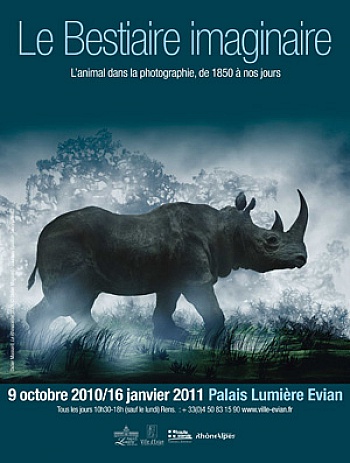 Le Bestiaire imaginaire
Cette exposition réunit plus d’une centaine de photographies d’animaux réels ou imaginaires prises par des photographes majeurs du XIXe siècle et des artistes contemporains qui se retrouvent autour d’une pensée commune : la place de l’animal dans la photographie. L’animal est une figure trés présente dans la pensée, il symbolise nos croyances, illustre nos contes et légendes, peuple notre imaginaire. Véritable énigme, il exerce une fascination, inspire les artistes et devient l’acteur de ses représentations dès les débuts de l’invention de la photographie.
L’animal est au départ photographié comme un sujet d’étude, en effet ...
Le Bestiaire imaginaire
Cette exposition réunit plus d’une centaine de photographies d’animaux réels ou imaginaires prises par des photographes majeurs du XIXe siècle et des artistes contemporains qui se retrouvent autour d’une pensée commune : la place de l’animal dans la photographie. L’animal est une figure trés présente dans la pensée, il symbolise nos croyances, illustre nos contes et légendes, peuple notre imaginaire. Véritable énigme, il exerce une fascination, inspire les artistes et devient l’acteur de ses représentations dès les débuts de l’invention de la photographie.
L’animal est au départ photographié comme un sujet d’étude, en effet ... Dans le cadre du MAP10 de Toulouse, le myN'Club de Nikon a présenté 16 photos sur le thème des 4 éléments exposées sur des bâches sur le Quai de la Daurade (au bord de la Garonne). Ma photo "Vaisseau d'outre-espace" était exposée comme illustration du thème "Air"....
Dans le cadre du MAP10 de Toulouse, le myN'Club de Nikon a présenté 16 photos sur le thème des 4 éléments exposées sur des bâches sur le Quai de la Daurade (au bord de la Garonne). Ma photo "Vaisseau d'outre-espace" était exposée comme illustration du thème "Air"....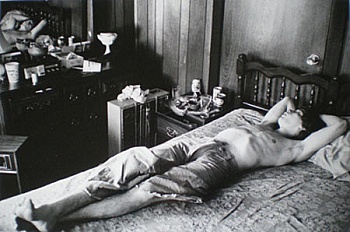 Prints by Weegee borrowed from the collections of the Maison Européenne de la Photographie form the starting point for our American journey.
It all begins with Weegee, “Weegee the Famous” as he liked to call himself and stamp on his photos. For decades he was THE photographer of New York, driving through the streets day and night in his car that had been specially fitted out as an office and photo studio. By tuning in to the police radio frequency, he was able to experience and photograph, almost in real time, all the newsworthy events that took place in the city.
Other photographers at the time adopted a more humanistic approach to New York. Accidents, the unexpected, sordid incidents and death disappeared, leaving a city that was gentle, poetic and perhaps a little melancholic. Louis Stettner...
Prints by Weegee borrowed from the collections of the Maison Européenne de la Photographie form the starting point for our American journey.
It all begins with Weegee, “Weegee the Famous” as he liked to call himself and stamp on his photos. For decades he was THE photographer of New York, driving through the streets day and night in his car that had been specially fitted out as an office and photo studio. By tuning in to the police radio frequency, he was able to experience and photograph, almost in real time, all the newsworthy events that took place in the city.
Other photographers at the time adopted a more humanistic approach to New York. Accidents, the unexpected, sordid incidents and death disappeared, leaving a city that was gentle, poetic and perhaps a little melancholic. Louis Stettner...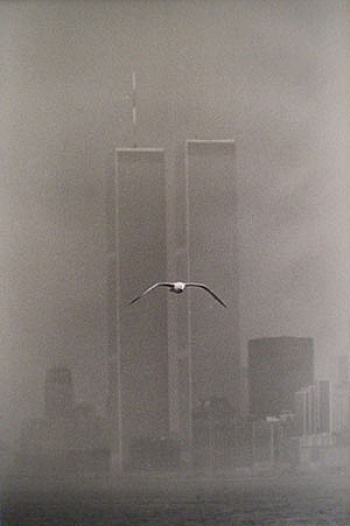 Les tirages de Weegee empruntés aux collections de la Maison Européenne de la Photographie sont le point de départ de notre promenade américaine.
Tout commence avec Weegee, Weegee the Famous, comme il aimait s’appeler et tamponner ses photos. Il a été durant des décennies, le photographe de New York, arpentant les rues de jour et de nuit dans sa voiture spécialement aménagée en bureau et en studio photo ; branché sur la radio de la police, il vivait et rendait compte presque en temps réel de tous les faits divers qui agitaient la ville.
D’autres photographes à la même époque, portent un regard plus humaniste sur New York. L’accident, l’imprévu, le sordide ou la mort disparais...
Les tirages de Weegee empruntés aux collections de la Maison Européenne de la Photographie sont le point de départ de notre promenade américaine.
Tout commence avec Weegee, Weegee the Famous, comme il aimait s’appeler et tamponner ses photos. Il a été durant des décennies, le photographe de New York, arpentant les rues de jour et de nuit dans sa voiture spécialement aménagée en bureau et en studio photo ; branché sur la radio de la police, il vivait et rendait compte presque en temps réel de tous les faits divers qui agitaient la ville.
D’autres photographes à la même époque, portent un regard plus humaniste sur New York. L’accident, l’imprévu, le sordide ou la mort disparais...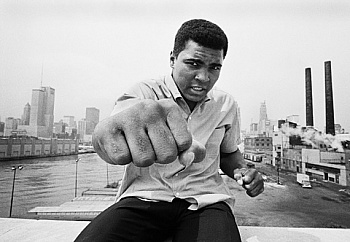 ICONIC PORTRAITS OF POWERFUL AND INFLUENTIAL FIGURES OF THE LAST 60 YEARS - EXHIBITION OF RARE VINTAGE AND SIGNED PHOTOGRAPHS
Atlas Gallery announce an important new exhibition of rare portraits by some of the most notable photographers of the last six decades. Curated personally by the gallery's director Ben Burdett, the subjects have been chosen from the fields of politics, sport, the arts, entertainment and science.
The selection of works on show attempts to examine the way in which the camera portrait not only provides the individual with a visual memory and reference for the subjects of the portrait but in some rare cases, when reproduced enough times, provides an almost universal human record.The works chosen have been selected not only for the status and influence of the subjects but for the importance of ...
ICONIC PORTRAITS OF POWERFUL AND INFLUENTIAL FIGURES OF THE LAST 60 YEARS - EXHIBITION OF RARE VINTAGE AND SIGNED PHOTOGRAPHS
Atlas Gallery announce an important new exhibition of rare portraits by some of the most notable photographers of the last six decades. Curated personally by the gallery's director Ben Burdett, the subjects have been chosen from the fields of politics, sport, the arts, entertainment and science.
The selection of works on show attempts to examine the way in which the camera portrait not only provides the individual with a visual memory and reference for the subjects of the portrait but in some rare cases, when reproduced enough times, provides an almost universal human record.The works chosen have been selected not only for the status and influence of the subjects but for the importance of ... In February 2010 Magnum Photos announced the sale of its New York print archive to the founder of Dell computers, Michael Dell. Comprising over 185,000 photographs, this landmark acquisition takes a substantial amount of previously purchasable early Magnum photographs off the market, to be catalogued and preserved as a study collection at the Harry Ransom Center at the University of Texas, Austin. “Early Magnum” provides an opportunity to view rare prints from the Magnum archive in London, which remain available for sale. Composed of work by photographers associated with the agency in its first 10 years (1947 – 1957), it includes all four founders: Henri Cartier-Bresson, David Seymour, George Rodger and Robert Capa; series’ by Werner Bischof, Leonard Freed and Dennis Stock, as well as individua...
In February 2010 Magnum Photos announced the sale of its New York print archive to the founder of Dell computers, Michael Dell. Comprising over 185,000 photographs, this landmark acquisition takes a substantial amount of previously purchasable early Magnum photographs off the market, to be catalogued and preserved as a study collection at the Harry Ransom Center at the University of Texas, Austin. “Early Magnum” provides an opportunity to view rare prints from the Magnum archive in London, which remain available for sale. Composed of work by photographers associated with the agency in its first 10 years (1947 – 1957), it includes all four founders: Henri Cartier-Bresson, David Seymour, George Rodger and Robert Capa; series’ by Werner Bischof, Leonard Freed and Dennis Stock, as well as individua... Iconic Portraits of Powerful and influential figures of the last 60 years.
The selection of the works on show attempts to examine the way in which the camera portrait not only provides the individual with a visual memory and reference for the subjects of the portrait but in some rare cases, when reproduced enough times, provides an almost universal human record....
Iconic Portraits of Powerful and influential figures of the last 60 years.
The selection of the works on show attempts to examine the way in which the camera portrait not only provides the individual with a visual memory and reference for the subjects of the portrait but in some rare cases, when reproduced enough times, provides an almost universal human record....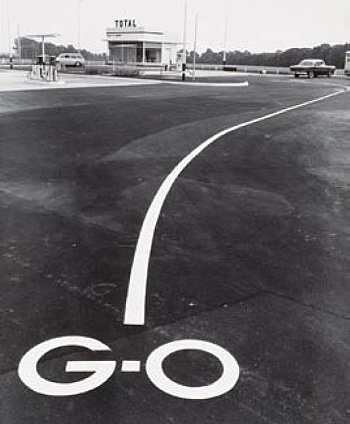 “On the Road”, une sélection de tirages issus des collections de la MEP et de la Médiathèque de l’Architecture et du Patrimoine autour du thème de la route.
Le voyage, ce n’est pas arriver, c’est partir. Les photographes adorent le voyage. La saveur de l’inconnu, du mouvement, d’ici ou d’ailleurs.
“On the Road” réunit les visions oniriques de photographes majeurs du 20ème siècle qui rendent compte de ce moment privilégié de la transition. Il n’était pas évident d’amener vingt-cinq auteurs dans sur la plate-forme d’un camion suggéré par Jack Kerouac sur les routes de la poésie. La joie, la force, la suggestion qui s’en dégagent invite...
“On the Road”, une sélection de tirages issus des collections de la MEP et de la Médiathèque de l’Architecture et du Patrimoine autour du thème de la route.
Le voyage, ce n’est pas arriver, c’est partir. Les photographes adorent le voyage. La saveur de l’inconnu, du mouvement, d’ici ou d’ailleurs.
“On the Road” réunit les visions oniriques de photographes majeurs du 20ème siècle qui rendent compte de ce moment privilégié de la transition. Il n’était pas évident d’amener vingt-cinq auteurs dans sur la plate-forme d’un camion suggéré par Jack Kerouac sur les routes de la poésie. La joie, la force, la suggestion qui s’en dégagent invite...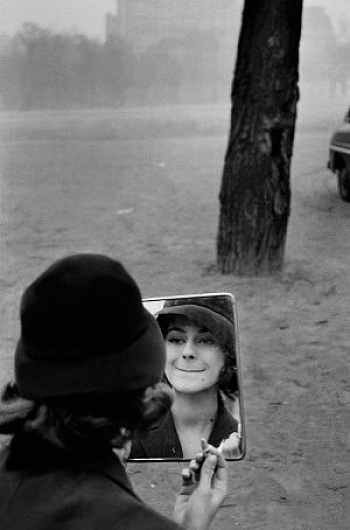 Texte à venir
...
Texte à venir
... L'Afrique du Sud à l'honneur
Quelques mois avant la Coupe du monde de football, Polka se concentre sur l’histoire de cet Etat pas comme les autres. Le pays de l’apartheid a réussi sans bain de sang sa transition vers la démocratie pour devenir une “nation arc-en-ciel”. Il le doit en particulier à un homme, Nelson Mandela, dont les photographies intimes de Jurgen Schadeberg et d’Alf Kumalo retracent la destinée.
Cinema Mundi
A l’occasion de l’exposition “Tournages : Paris-Berlin-Hollywood 1910-1939” à la Cinémathèque française, la Galerie Polka fait le tour du monde des tournages avec Stefano De Luigi et expose des photographies de stars saisies sur le vif en coulisses par Mary Ellen Mark, Willy Ri...
L'Afrique du Sud à l'honneur
Quelques mois avant la Coupe du monde de football, Polka se concentre sur l’histoire de cet Etat pas comme les autres. Le pays de l’apartheid a réussi sans bain de sang sa transition vers la démocratie pour devenir une “nation arc-en-ciel”. Il le doit en particulier à un homme, Nelson Mandela, dont les photographies intimes de Jurgen Schadeberg et d’Alf Kumalo retracent la destinée.
Cinema Mundi
A l’occasion de l’exposition “Tournages : Paris-Berlin-Hollywood 1910-1939” à la Cinémathèque française, la Galerie Polka fait le tour du monde des tournages avec Stefano De Luigi et expose des photographies de stars saisies sur le vif en coulisses par Mary Ellen Mark, Willy Ri...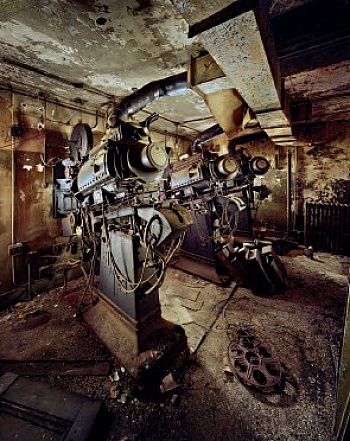 En partenariat avec l’exposition organisée par la Cinémathèque française “Tournages : Paris-Berlin-Hollywood / 1910-1939”, une plongée au coeur des photographies de plateau du 7e Art, Polka vous propose de prolonger le rêve en visitant “Cinema Mundi”.
En route pour un tour du monde des tournages avec Stefano De Luigi. Nollywood, Bollywood, les studios de l’Armée Rouge chinoise, les nouveaux cinémas du monde ouvrent leurs portes à ce photographe italien de l’agence VII. De magnifiques tirages Fine Art où la photographie prend des allures de gravure. “Cinema Mundi” continue le film avec les photographies de stars américaines et européennes saisies sur le vif en coulisses : Marilyn Monr...
En partenariat avec l’exposition organisée par la Cinémathèque française “Tournages : Paris-Berlin-Hollywood / 1910-1939”, une plongée au coeur des photographies de plateau du 7e Art, Polka vous propose de prolonger le rêve en visitant “Cinema Mundi”.
En route pour un tour du monde des tournages avec Stefano De Luigi. Nollywood, Bollywood, les studios de l’Armée Rouge chinoise, les nouveaux cinémas du monde ouvrent leurs portes à ce photographe italien de l’agence VII. De magnifiques tirages Fine Art où la photographie prend des allures de gravure. “Cinema Mundi” continue le film avec les photographies de stars américaines et européennes saisies sur le vif en coulisses : Marilyn Monr...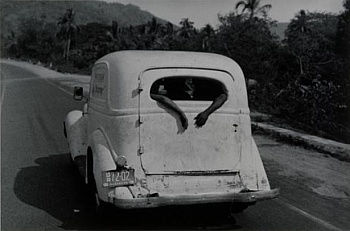 La Maison Européenne de la Photographie présente “On the Road”, une sélection de tirages issus des collections de la MEP et de la Médiathèque de l’Architecture et du Patrimoine autour du thème de la route.
Le voyage, ce n’est pas arriver, c’est partir. Les photographes adorent le voyage. La saveur de l’inconnu, du mouvement, d’ici ou d’ailleurs.
“On the Road” réunit les visions oniriques de photographes majeurs du 20ème siècle qui rendent compte de ce moment privilégié de la transition. Il n’était pas évident d’amener vingt-cinq auteurs dans sur la plate-forme d’un camion suggéré par Jack Kerouac sur les routes de la poésie. La jo...
La Maison Européenne de la Photographie présente “On the Road”, une sélection de tirages issus des collections de la MEP et de la Médiathèque de l’Architecture et du Patrimoine autour du thème de la route.
Le voyage, ce n’est pas arriver, c’est partir. Les photographes adorent le voyage. La saveur de l’inconnu, du mouvement, d’ici ou d’ailleurs.
“On the Road” réunit les visions oniriques de photographes majeurs du 20ème siècle qui rendent compte de ce moment privilégié de la transition. Il n’était pas évident d’amener vingt-cinq auteurs dans sur la plate-forme d’un camion suggéré par Jack Kerouac sur les routes de la poésie. La jo...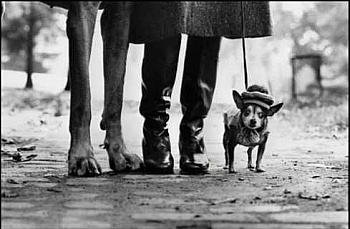 La Maison Européenne de la Photographie présente “Elliott Erwitt : Personal Best”, une exposition rétrospective d’Elliott Erwitt, photographe américain né à Paris.
Comme son titre l’indique (“Le Meilleur de moi-même”), cette exposition s’inspire d’un choix d’Elliott Erwitt parmi ses images préférées, ses coups de coeur. À travers plus de cent trente oeuvres, dont de nombreux tirages d’époque très peu vus, l’exposition retrace l’ensemble de son parcours depuis soixante ans.
Photographe depuis 1948 et membre de l’agence Magnum Photos depuis 1953, Elliott Erwitt est un observateur vif et espiègle de la vie quotidienne ; on trouve parmi ses sujets de ...
La Maison Européenne de la Photographie présente “Elliott Erwitt : Personal Best”, une exposition rétrospective d’Elliott Erwitt, photographe américain né à Paris.
Comme son titre l’indique (“Le Meilleur de moi-même”), cette exposition s’inspire d’un choix d’Elliott Erwitt parmi ses images préférées, ses coups de coeur. À travers plus de cent trente oeuvres, dont de nombreux tirages d’époque très peu vus, l’exposition retrace l’ensemble de son parcours depuis soixante ans.
Photographe depuis 1948 et membre de l’agence Magnum Photos depuis 1953, Elliott Erwitt est un observateur vif et espiègle de la vie quotidienne ; on trouve parmi ses sujets de ... Depuis 2004, Phaidon expose à Paris Photo, au cœur des espaces galeries, sa collection de Tirages limités. Les Tirages limités sont créés spécialement et exclusivement par Phaidon. Un coffret Tirage limité inclut l’édition spéciale d’un ouvrage de photographie, numérotée et signée, accompagnée d’un tirage également signé et numéroté par le photographe. À l’occasion de l’édition 2009 de Paris Photo, Phaidon présente un nouveau Tirage limité : Danny Lyon.
Tacita Dean
À travers films, dessins, photographies, enregistrements audio et installations, l’artiste anglaise Tacita Dean, qui vit et travaille à Berlin, explore de qu...
Depuis 2004, Phaidon expose à Paris Photo, au cœur des espaces galeries, sa collection de Tirages limités. Les Tirages limités sont créés spécialement et exclusivement par Phaidon. Un coffret Tirage limité inclut l’édition spéciale d’un ouvrage de photographie, numérotée et signée, accompagnée d’un tirage également signé et numéroté par le photographe. À l’occasion de l’édition 2009 de Paris Photo, Phaidon présente un nouveau Tirage limité : Danny Lyon.
Tacita Dean
À travers films, dessins, photographies, enregistrements audio et installations, l’artiste anglaise Tacita Dean, qui vit et travaille à Berlin, explore de qu...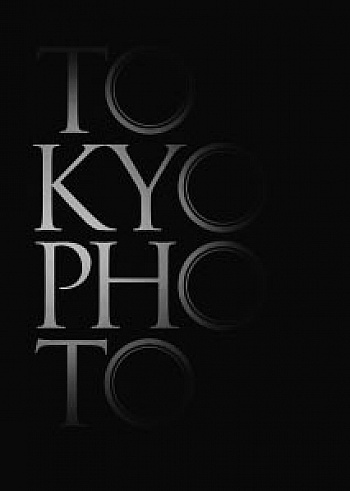 TOKYO PHOTO 2009 endeavors to be the foremost art fair of photography in Japan. The venue is located in the heart of international business and culture in Tokyo. To be held from September 4 to 6, Tokyo Photo 2009 will provide visitors with a unique opportunity to see and buy a wide range of photographic works from vintage prints to cutting-edge digitally enhanced images.
With the support of the US Embassy and in collaboration with the Museum of Photographic Arts in San Diego, Tokyo Photo will mount a special exhibition entitled Photo America. Featuring over 50 historical works spanning the 19th century to the present, Photo America will present a panoramic overview of American photographic expression. Virtually all of the works will be displayed for the first time in Japan.
PROGRAMMING
Lectures and seminars will...
TOKYO PHOTO 2009 endeavors to be the foremost art fair of photography in Japan. The venue is located in the heart of international business and culture in Tokyo. To be held from September 4 to 6, Tokyo Photo 2009 will provide visitors with a unique opportunity to see and buy a wide range of photographic works from vintage prints to cutting-edge digitally enhanced images.
With the support of the US Embassy and in collaboration with the Museum of Photographic Arts in San Diego, Tokyo Photo will mount a special exhibition entitled Photo America. Featuring over 50 historical works spanning the 19th century to the present, Photo America will present a panoramic overview of American photographic expression. Virtually all of the works will be displayed for the first time in Japan.
PROGRAMMING
Lectures and seminars will... Early last year, the Polaroid Corporation ceased producing its iconic film. The 9th October 2009 will see the final “Use by” or Expiration date of the last batch of Polaroid film manufactured. The exhibition at Atlas will feature a wide selection of Polaroid prints by photographers who have either worked directly with the Polaroid Corporation as part of their research program or who have become famous for the quality of their Polaroid prints either alongside or independent from their traditional camera-based work. It will thus trace the development and use of this unique medium up to the present day. The opening reception will coincide with Polaroid film’s final date of expiration.
The Polaroid or ‘one-step photography’ was invented by Edwin H. Land, founder of the Polaroid Corporati...
Early last year, the Polaroid Corporation ceased producing its iconic film. The 9th October 2009 will see the final “Use by” or Expiration date of the last batch of Polaroid film manufactured. The exhibition at Atlas will feature a wide selection of Polaroid prints by photographers who have either worked directly with the Polaroid Corporation as part of their research program or who have become famous for the quality of their Polaroid prints either alongside or independent from their traditional camera-based work. It will thus trace the development and use of this unique medium up to the present day. The opening reception will coincide with Polaroid film’s final date of expiration.
The Polaroid or ‘one-step photography’ was invented by Edwin H. Land, founder of the Polaroid Corporati... Expositions de Stuart Franklin, Cedric Delsaux, Bruce Davidson, Brent Stirton ainsi que la gagnante de l’Iris d’Or des World Photography Awards de Sony, Vanessa Winship, avec visites guidées par les photographes et séances de dédicaces. Soirée d’ouverture du Festival, présidée par Elliott Erwitt, avec projection rétrospective personnelle et présentation exclusive de son prochain projet inédit. Cérémonie, soirée et dîner de gala au Palais des Festivals le 16 avril avec remise de prix des gagnants des 12 catégories professionnelles et des 9 catégories amateurs, et de l’Iris d’Or (Meilleur Photographe SWPA de l’Année 2009), et présentation finale du gagnant des Lifetime Ac...
Expositions de Stuart Franklin, Cedric Delsaux, Bruce Davidson, Brent Stirton ainsi que la gagnante de l’Iris d’Or des World Photography Awards de Sony, Vanessa Winship, avec visites guidées par les photographes et séances de dédicaces. Soirée d’ouverture du Festival, présidée par Elliott Erwitt, avec projection rétrospective personnelle et présentation exclusive de son prochain projet inédit. Cérémonie, soirée et dîner de gala au Palais des Festivals le 16 avril avec remise de prix des gagnants des 12 catégories professionnelles et des 9 catégories amateurs, et de l’Iris d’Or (Meilleur Photographe SWPA de l’Année 2009), et présentation finale du gagnant des Lifetime Ac...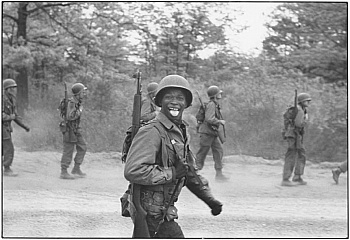 Les Roms, peuple sans frontières par Joakim Eskildsen
Terre brûlée du Niger par Laurence Leblanc
Zones tribales au Pakistan par Reza...
Les Roms, peuple sans frontières par Joakim Eskildsen
Terre brûlée du Niger par Laurence Leblanc
Zones tribales au Pakistan par Reza...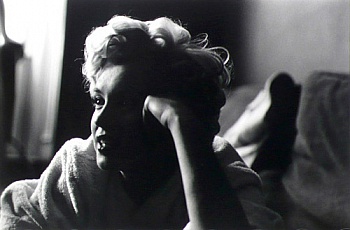 A selection of some of the finest and most personal photographs ever made by Elliott Erwitt, the esteemed photojournalist whose images are known the world over, will be shown this summer in the exhibition 'Elliott Erwitt: Unseen.' Comprised of a collection of largely unseen works and drawn from his two latest monographs, the exhibition will feature the photographs which the artist considers his 'personal best': the previously unpublished masterworks of a landmark photographer.
In a career that has spanned the last five decades, Erwitt has captured unforgettable scenes that have since become symbolic, communal memories of the twentieth century. From Marilyn Monroe at the premiere of 'Some Like it Hot' to the infamous 'Kitchen Debate' between Nixon and Khrushchev, iconic images of fashion, film, and politics have all be...
A selection of some of the finest and most personal photographs ever made by Elliott Erwitt, the esteemed photojournalist whose images are known the world over, will be shown this summer in the exhibition 'Elliott Erwitt: Unseen.' Comprised of a collection of largely unseen works and drawn from his two latest monographs, the exhibition will feature the photographs which the artist considers his 'personal best': the previously unpublished masterworks of a landmark photographer.
In a career that has spanned the last five decades, Erwitt has captured unforgettable scenes that have since become symbolic, communal memories of the twentieth century. From Marilyn Monroe at the premiere of 'Some Like it Hot' to the infamous 'Kitchen Debate' between Nixon and Khrushchev, iconic images of fashion, film, and politics have all be...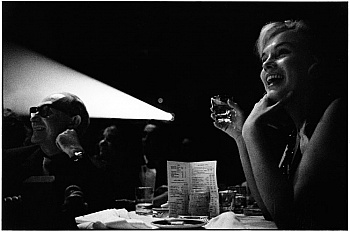 Dans un parcours d’environ quarante images, l’exposition “Seen & Unseen” fait découvrir des oeuvres inédites du photographe américain Elliott Erwitt. Ce sont des images pleines d’esprit: aussi bien la découverte du caractère humain à travers les chiens que de simples portraits acérés et inoubliables. C’est un Erwitt des solitudes urbaines, de la féminité intense et parfumée, des petits gestes et des petits
sentiments qui nous livre des instants de la vie telle qu’ils sont.
En dialogue avec des images jamais publiées et découvertes par le photographe récemment, une sélection parmi les grands classiques d’Elliott Erwitt permet de
déguster les images plus conn...
Dans un parcours d’environ quarante images, l’exposition “Seen & Unseen” fait découvrir des oeuvres inédites du photographe américain Elliott Erwitt. Ce sont des images pleines d’esprit: aussi bien la découverte du caractère humain à travers les chiens que de simples portraits acérés et inoubliables. C’est un Erwitt des solitudes urbaines, de la féminité intense et parfumée, des petits gestes et des petits
sentiments qui nous livre des instants de la vie telle qu’ils sont.
En dialogue avec des images jamais publiées et découvertes par le photographe récemment, une sélection parmi les grands classiques d’Elliott Erwitt permet de
déguster les images plus conn...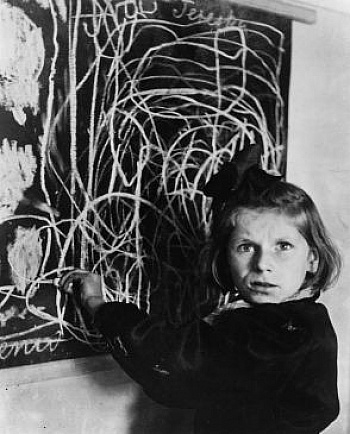 Throughout that period MAGNUM never ceased to supply photographs that have become part of the world’s collective memory – pictures of landmark events like the Russian army’s invasion of Prague in 1968 and the Tiananmen Square demonstrations in Beijing in 1989. The exhibition uses photographs, books and texts to illustrate the history of MAGNUM year by year and gives visitors the opportunity to view work by 83 photographers, such as Robert Capa, Henri Cartier-Bresson, Carl de Keyzer, Martin Parr, Susan Meiselas and Leonard Freed.
MAGNUM was established in 1947 by Robert Capa, Henri Cartier-Bresson, George Rodger and David Seymour. They were convinced that photography was the best medium with which to document world events and raise public awareness. And they succeeded – the way MAGNUM photographer...
Throughout that period MAGNUM never ceased to supply photographs that have become part of the world’s collective memory – pictures of landmark events like the Russian army’s invasion of Prague in 1968 and the Tiananmen Square demonstrations in Beijing in 1989. The exhibition uses photographs, books and texts to illustrate the history of MAGNUM year by year and gives visitors the opportunity to view work by 83 photographers, such as Robert Capa, Henri Cartier-Bresson, Carl de Keyzer, Martin Parr, Susan Meiselas and Leonard Freed.
MAGNUM was established in 1947 by Robert Capa, Henri Cartier-Bresson, George Rodger and David Seymour. They were convinced that photography was the best medium with which to document world events and raise public awareness. And they succeeded – the way MAGNUM photographer...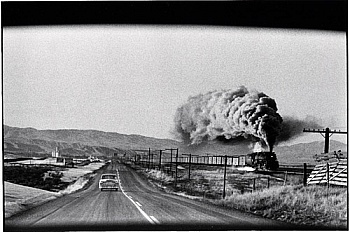 The famous Magnum photographer Elliott Erwitt is one of the most popular photographers of our time and narrator of brief, enthralling moments. Erwitt's specialty are the comedy and drama he finds in seemingly trivial situations. His humouresque black and white images are world famous; dogs and children are some of his favourite subjects. SEEN & UNSEEN is an exhibition showing nearly 100 images - icons as well as previously unpublished works: ordinary people and world stars like John F. Kennedy, Marilyn Monroe and Che Guevara in private moments. Erwitt about his own work: "Making people laugh is one of the greatest achievements. The very greatest, however, is to make someone laugh and cry at the same time!" Erwitt was awarded the renowned Lucie Award for his work on November 15, 2007.
Born in 1928 as the son of Russian...
The famous Magnum photographer Elliott Erwitt is one of the most popular photographers of our time and narrator of brief, enthralling moments. Erwitt's specialty are the comedy and drama he finds in seemingly trivial situations. His humouresque black and white images are world famous; dogs and children are some of his favourite subjects. SEEN & UNSEEN is an exhibition showing nearly 100 images - icons as well as previously unpublished works: ordinary people and world stars like John F. Kennedy, Marilyn Monroe and Che Guevara in private moments. Erwitt about his own work: "Making people laugh is one of the greatest achievements. The very greatest, however, is to make someone laugh and cry at the same time!" Erwitt was awarded the renowned Lucie Award for his work on November 15, 2007.
Born in 1928 as the son of Russian...